Hello, stranger.
I’m glad you decided to join me on this impromptu tour of a somewhat forgotten era of computing: the time when Screens Were Expensive – and so computers had no choice but to use smaller screens, small screens, and even ridiculously tiny screens.
Shall we…?
Marcin Wichary
17 September 2019 / 40 tweets / 75 photos
When screens were expensive
This is an archive of a Twitter thread from 2019. I have since deleted my Twitter account.
In the early 1980s, if you couldn’t afford a (ridiculously expensive) Xerox 860 word processor will a “full page” display, you could save some money by buying a Xerox 850, with a “half page” display.
(The 850 was still ridiculously expensive.)
(The 850 was still ridiculously expensive.)
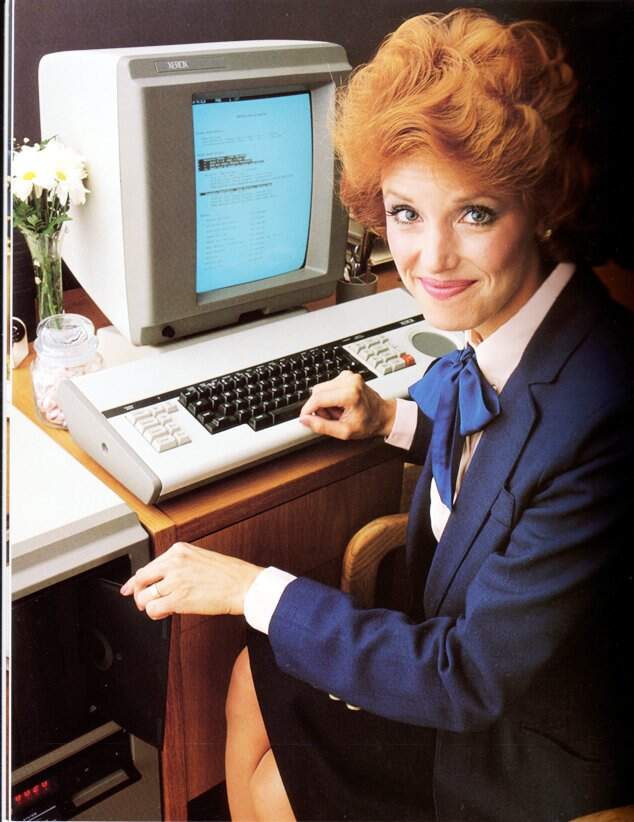
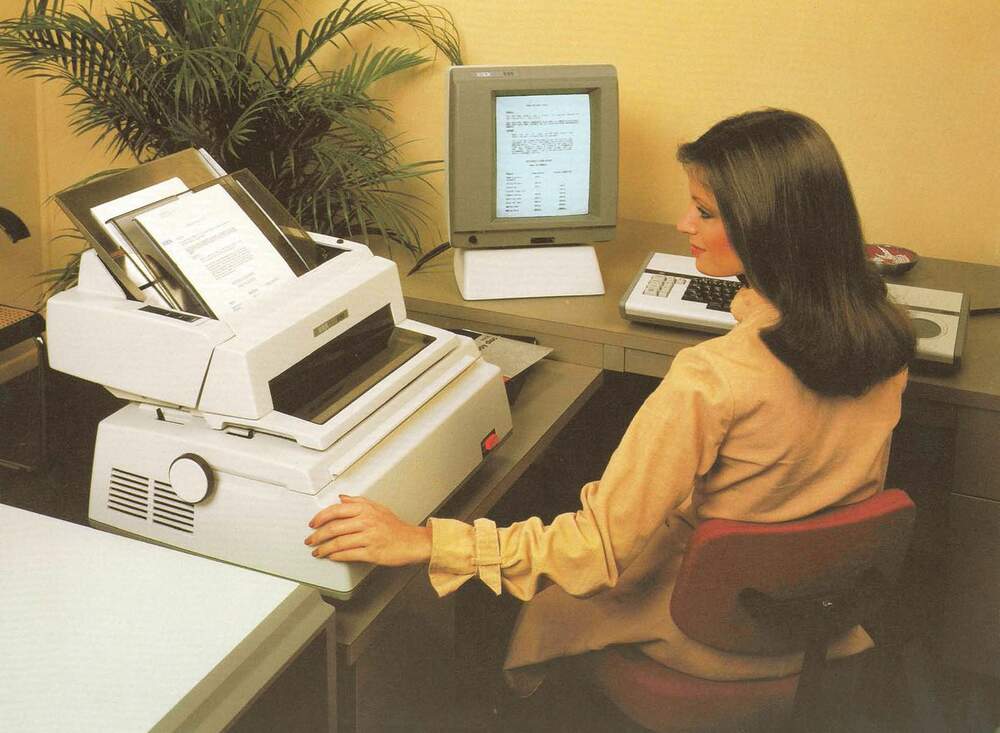
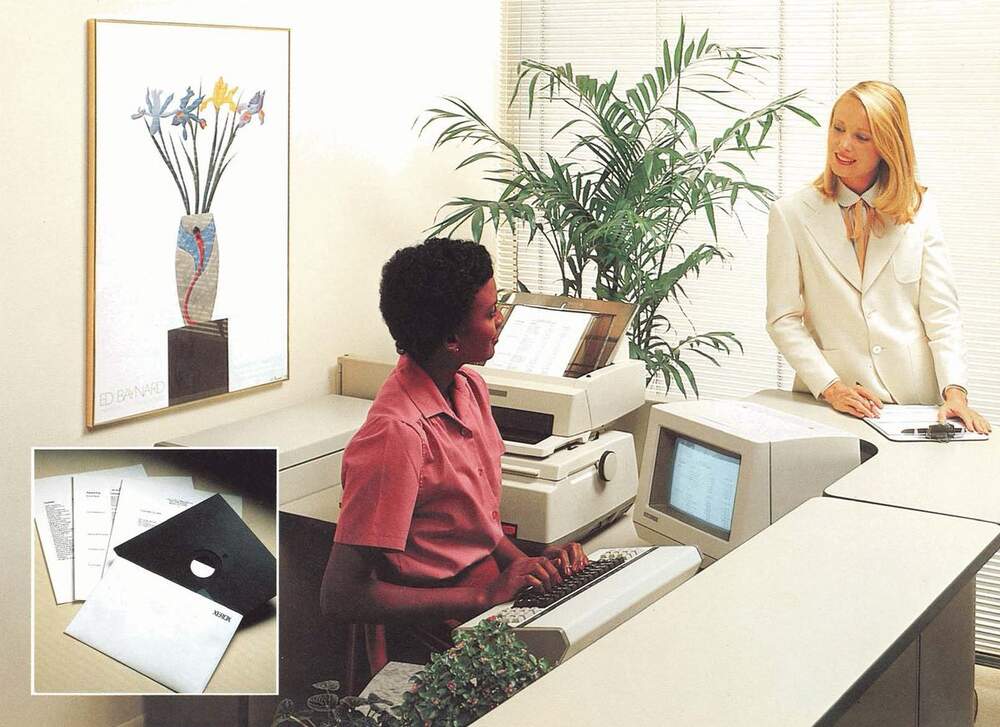
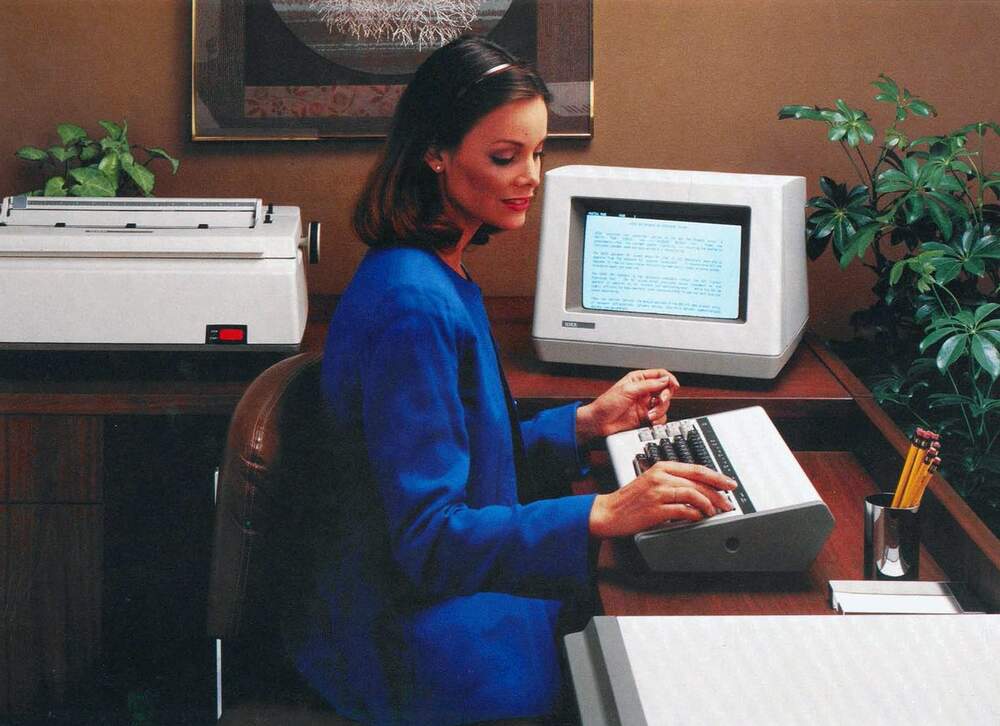
Magnavox Plasma display from 1978! Great name, really impressive, and probably very expensive… and yet still with a very thick bezel taking half of the responsibility of making it look awesome.
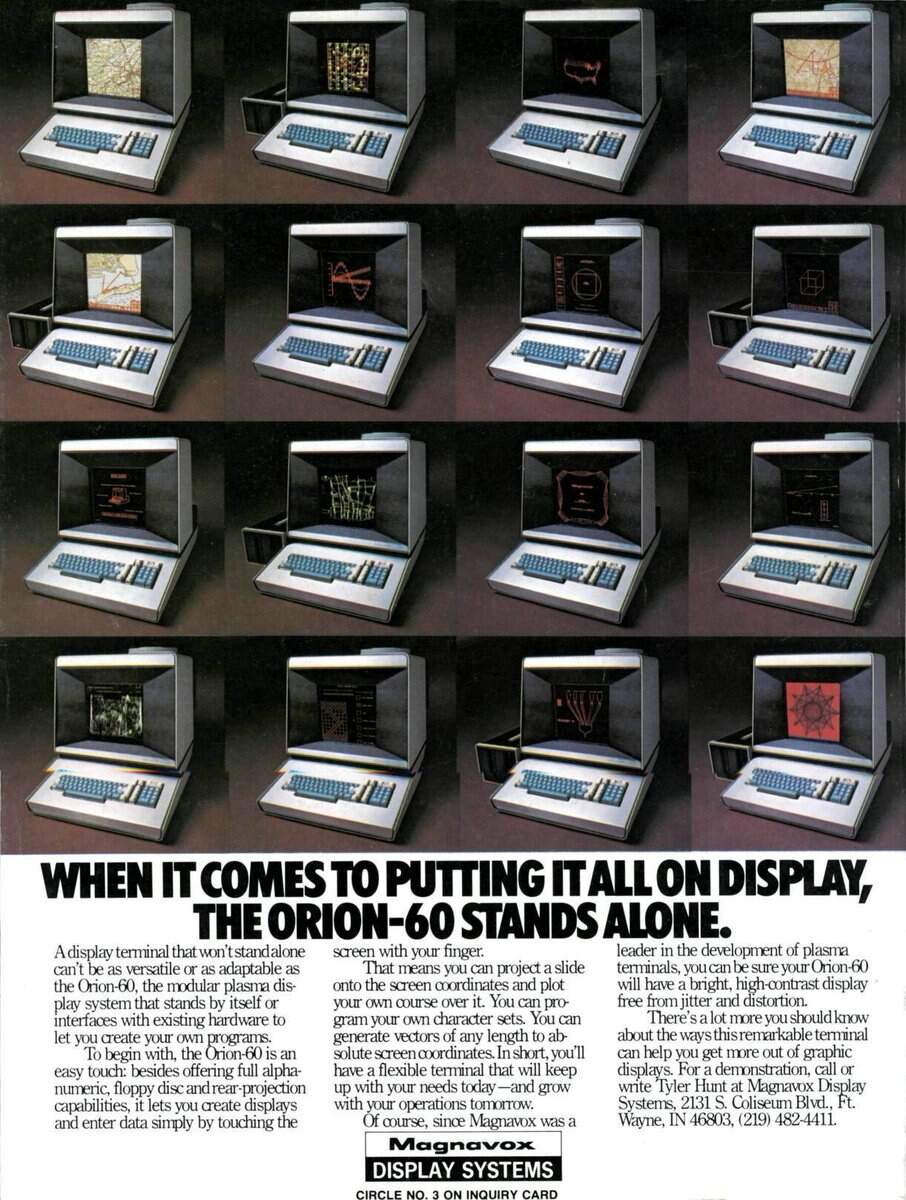
IBM 2260 was an earlier Master Of Bezels. I believe you could buy a more expensive model with More Screen, or a cheaper one with fewer lines… but the same form factor (just more plastic).
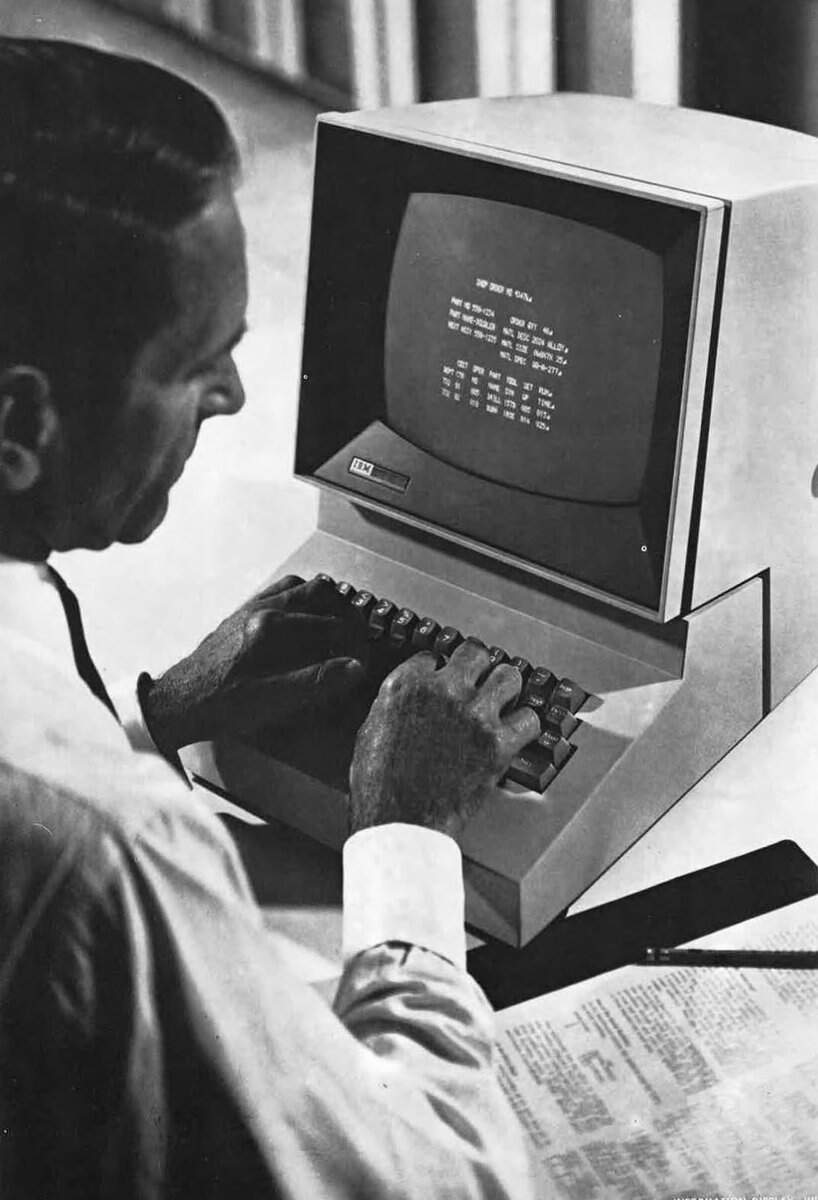
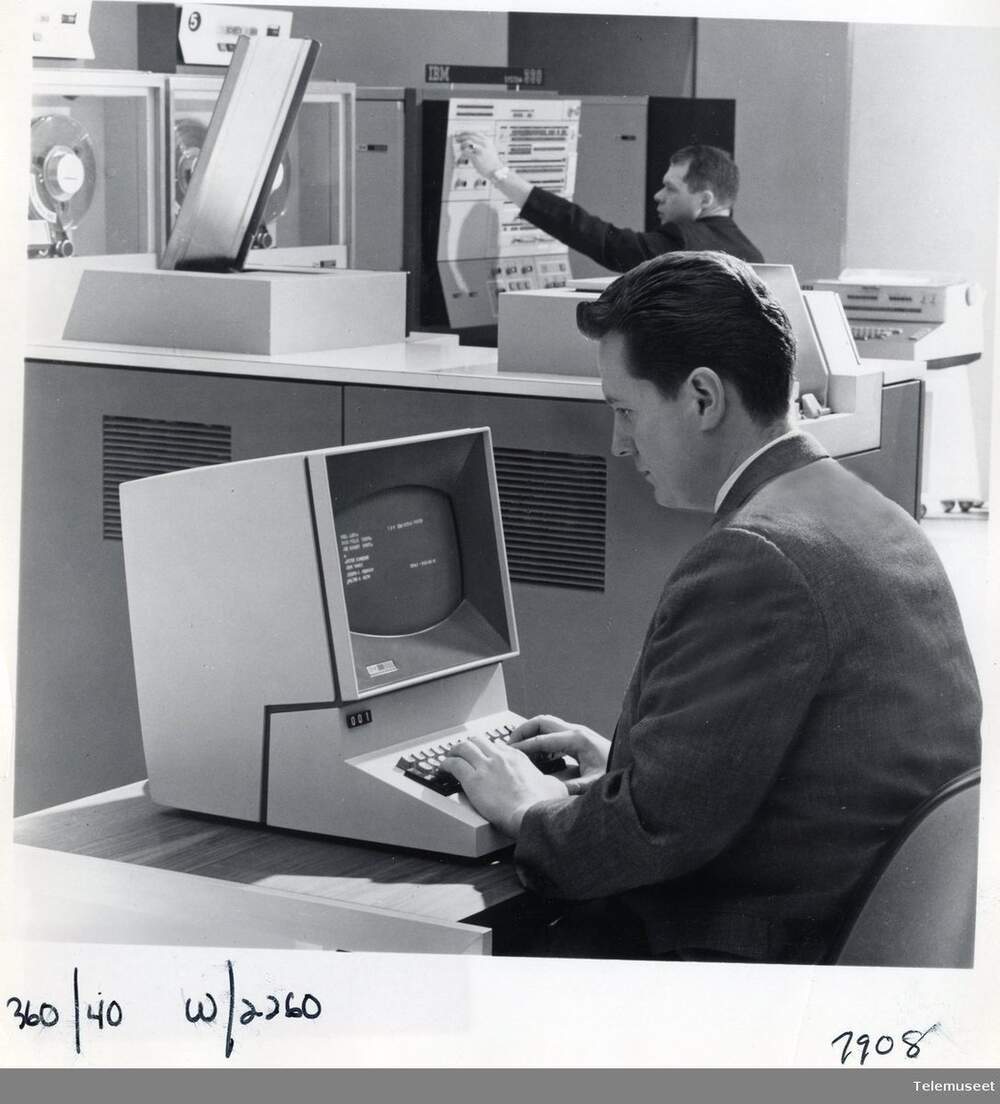
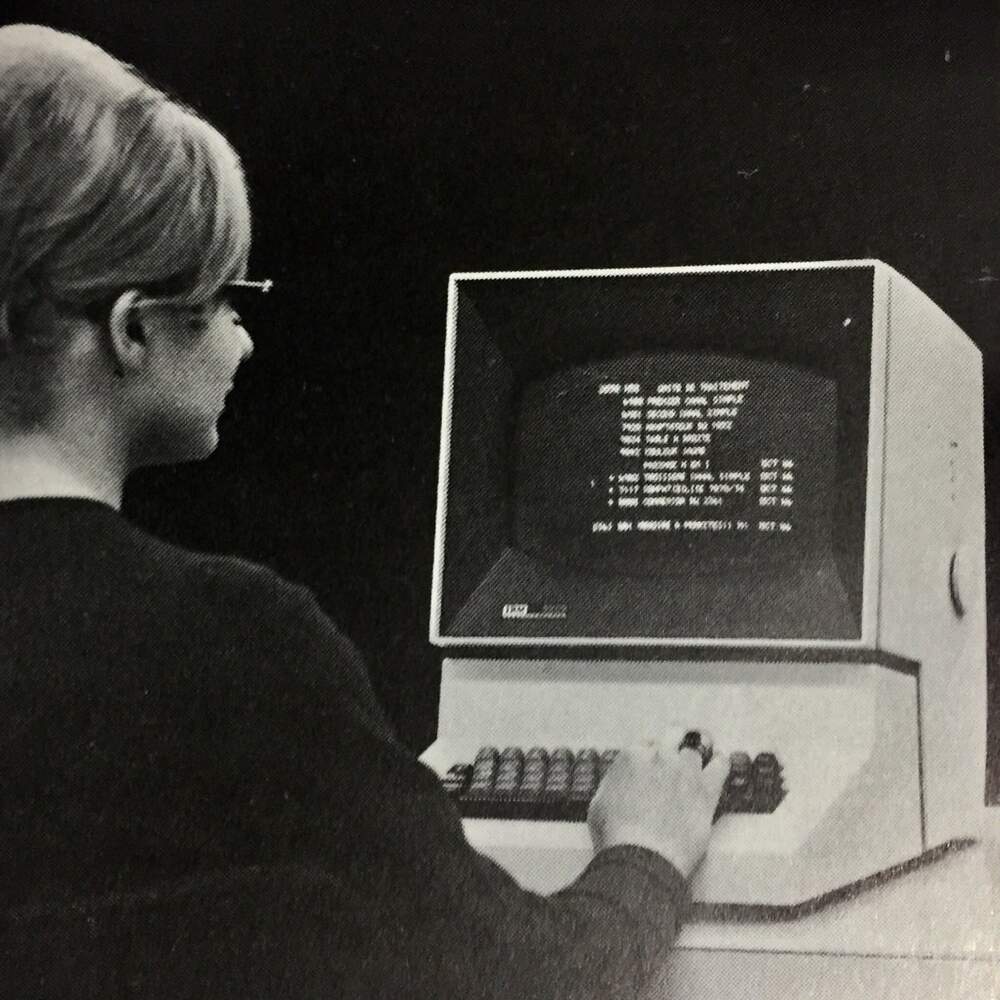
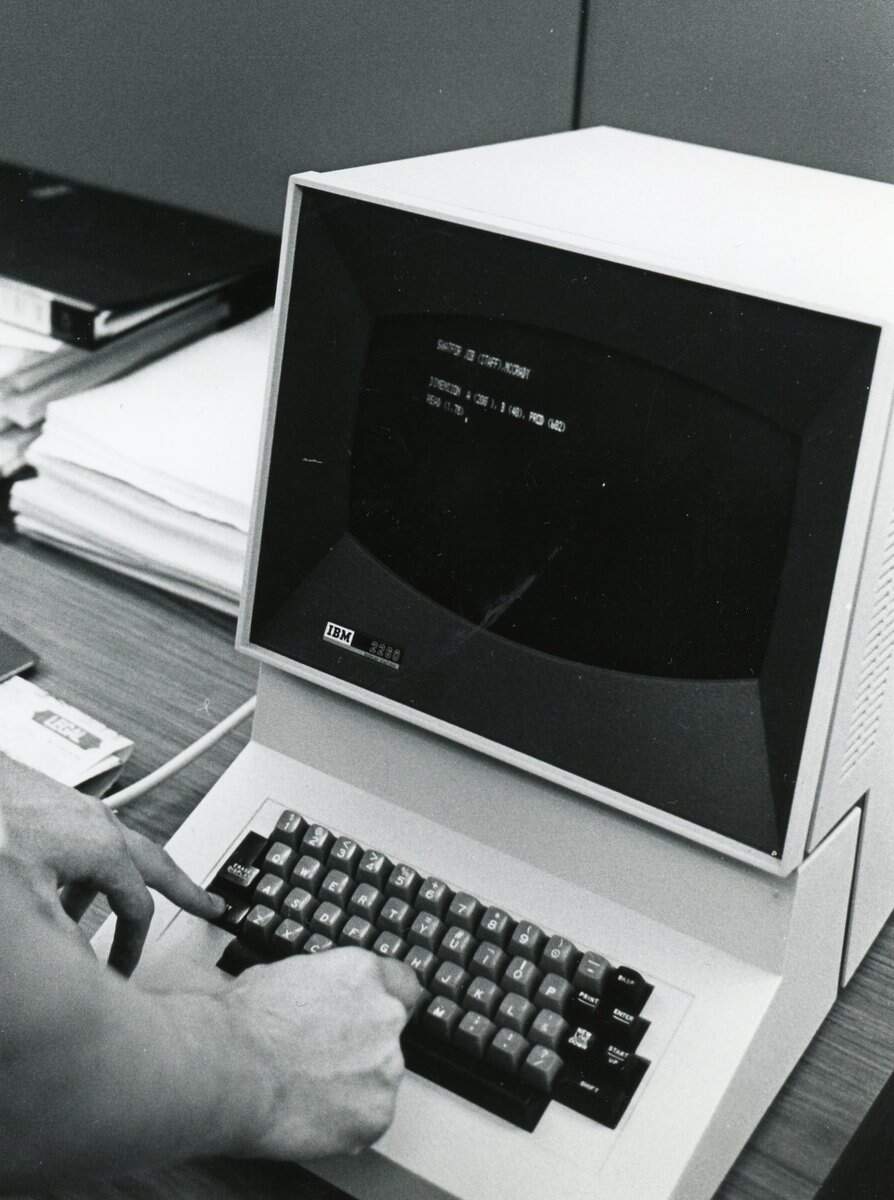
This is a Hell Digiset typesetting machine. The landscape screen looks impressive only without the keyboard – otherwise you realize this is not today’s typical screen made wider, but rather a normal screen made *shorter*.
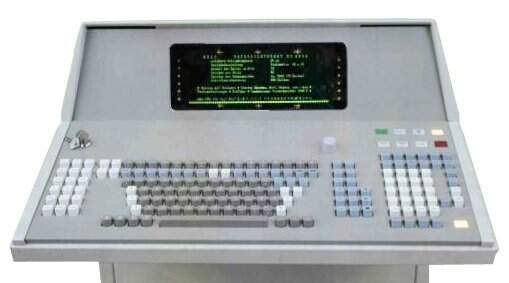
The situation was similar in the case of this “human-engineered” HP 250 – this terminal might not have had that many characters, but at least had so much *character*!
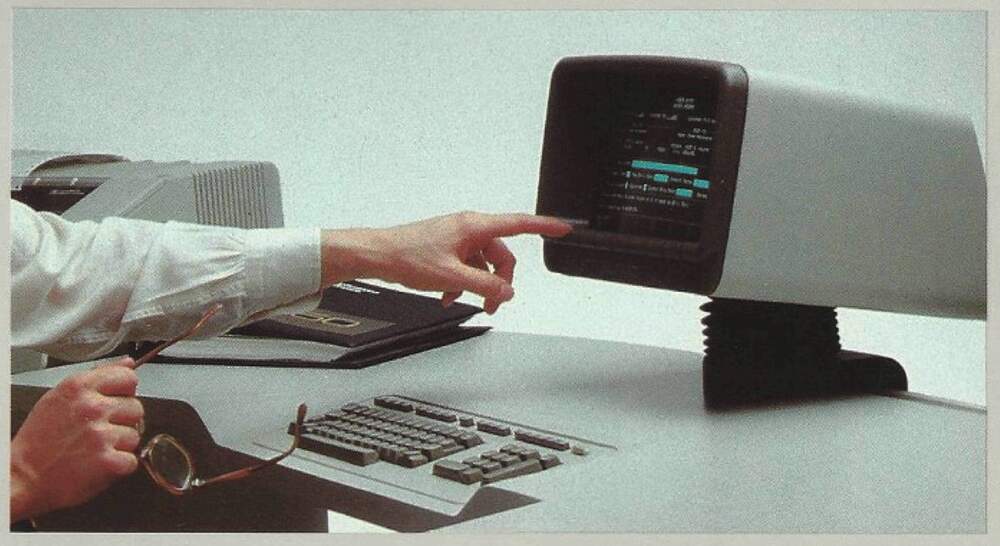
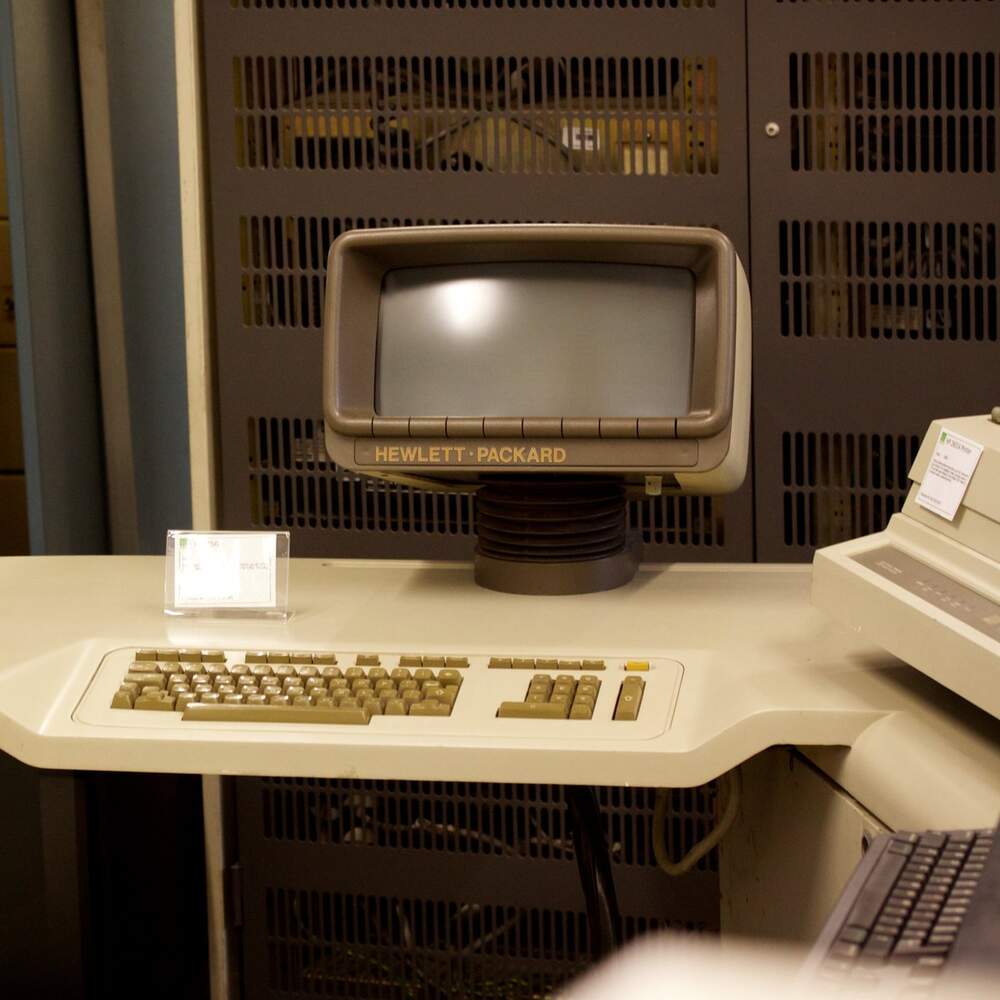
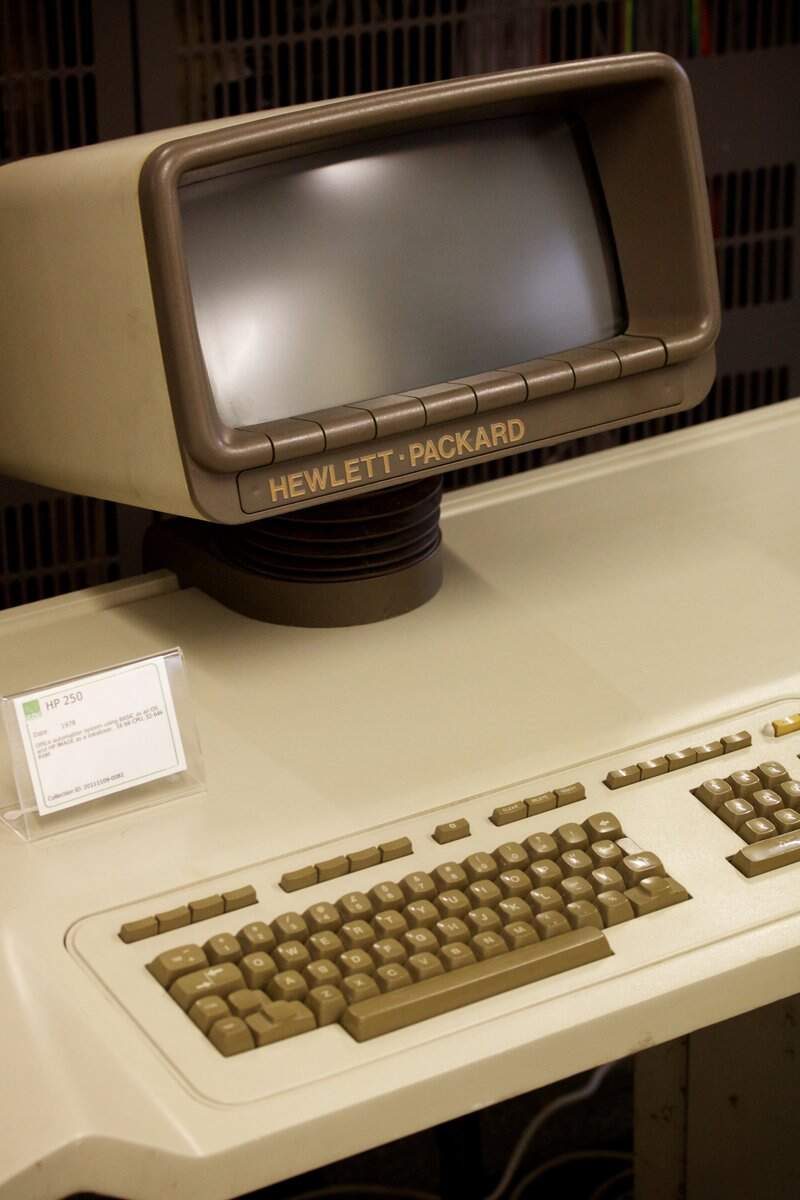
Speaking of style, check out this guy next to an IBM terminal probably around the same time (1970s). Once again, you could buy a more expensive screen, or a smaller one in a sea of black.

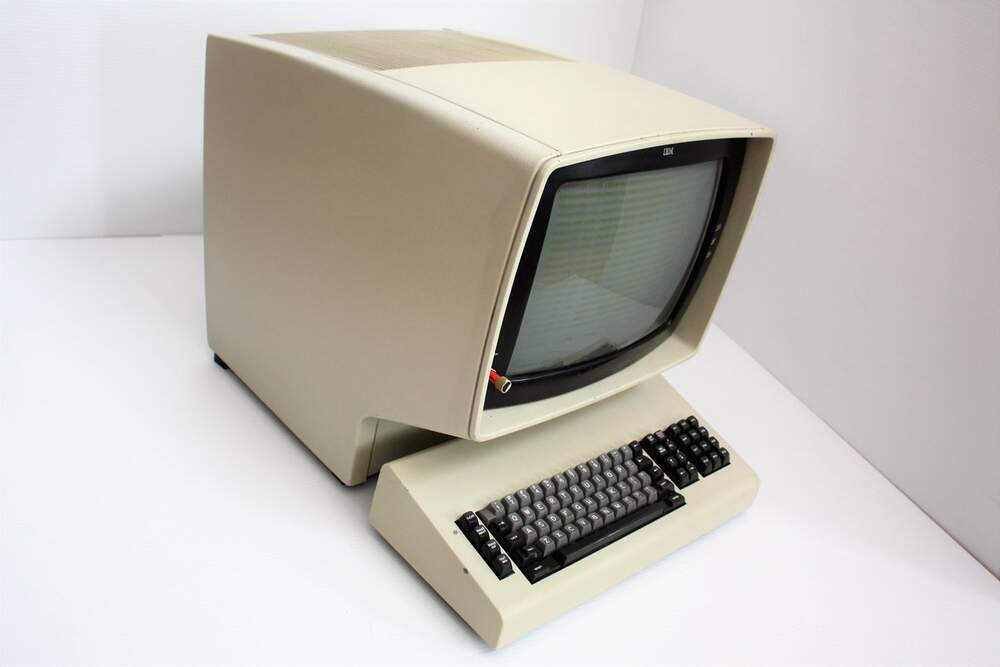
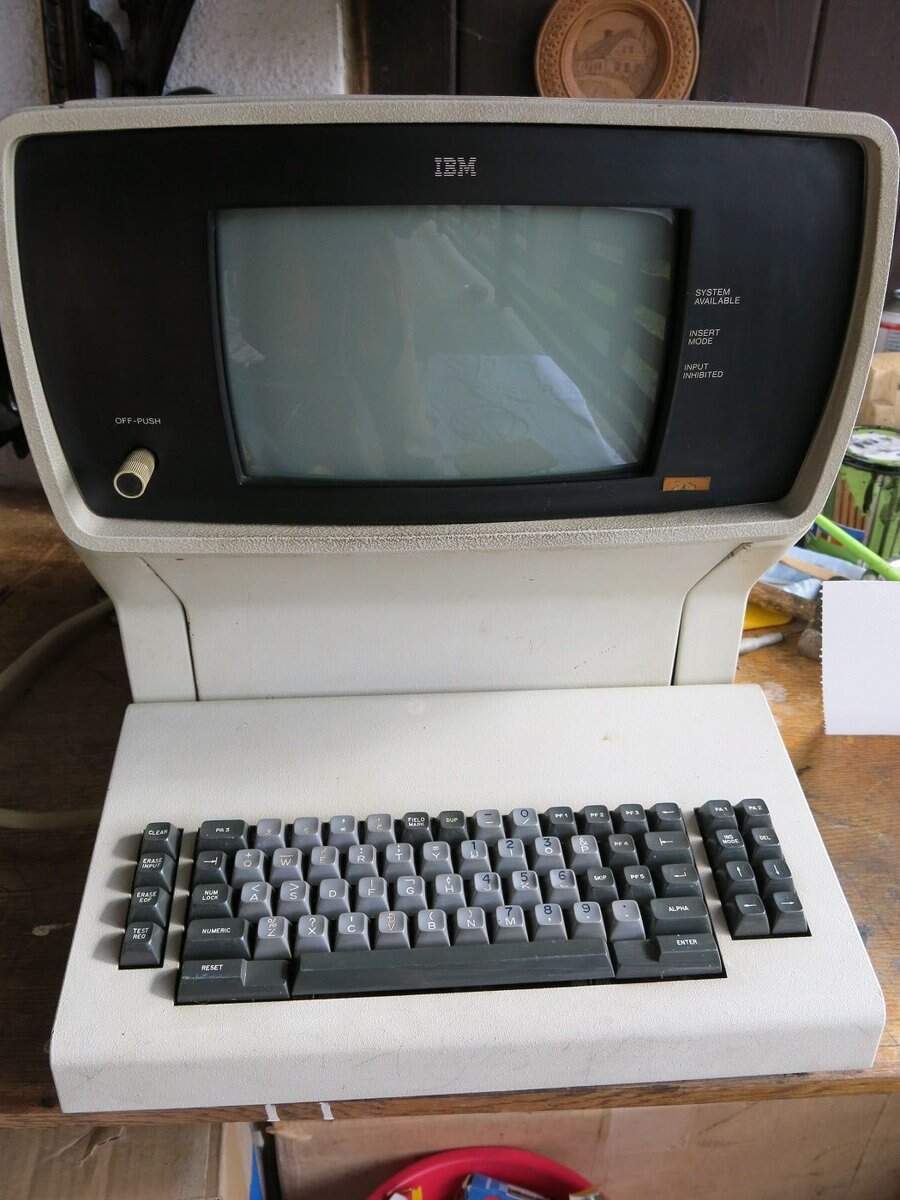
IBM was pretty good at screen trickery. IBM 3742 Dual Data Station was a data entry terminal meant for two people, and with two keyboards, but only a single screen. The screen was split into two “virtual screens” with a special prism.
(A single-screen 3741 was also available.)
(A single-screen 3741 was also available.)
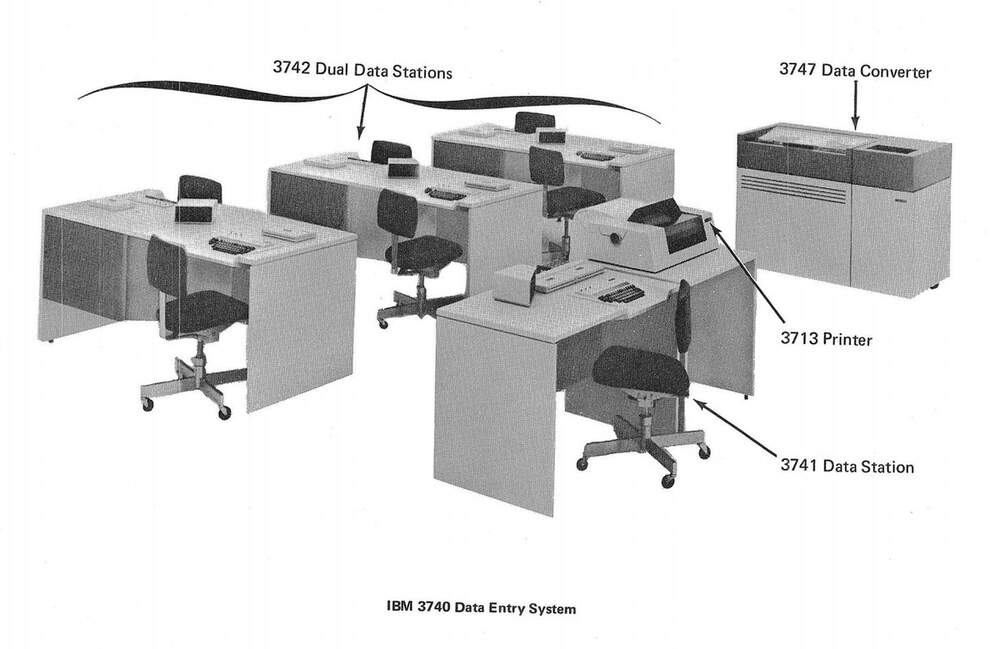
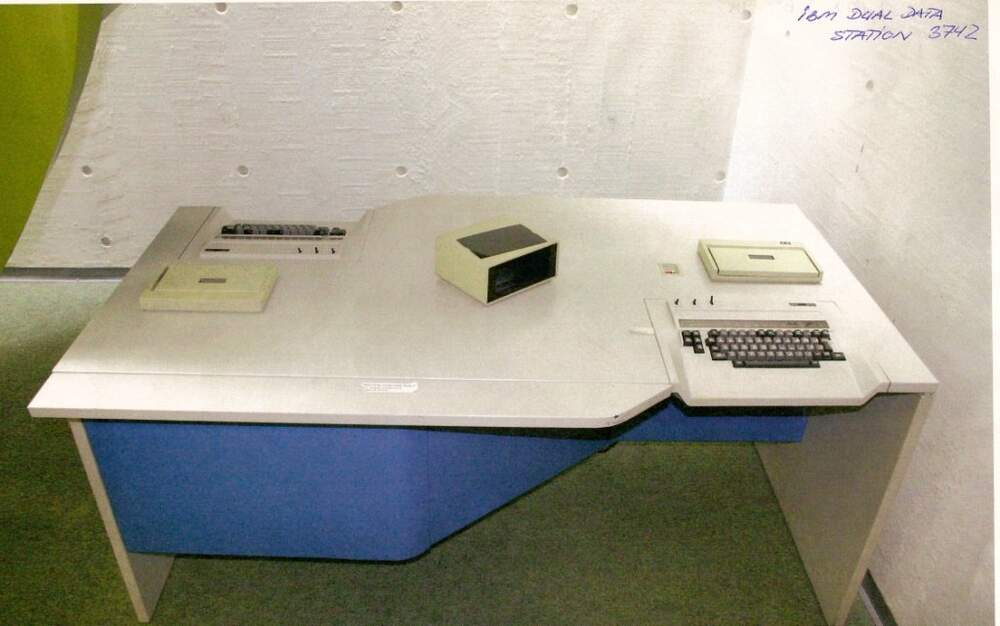
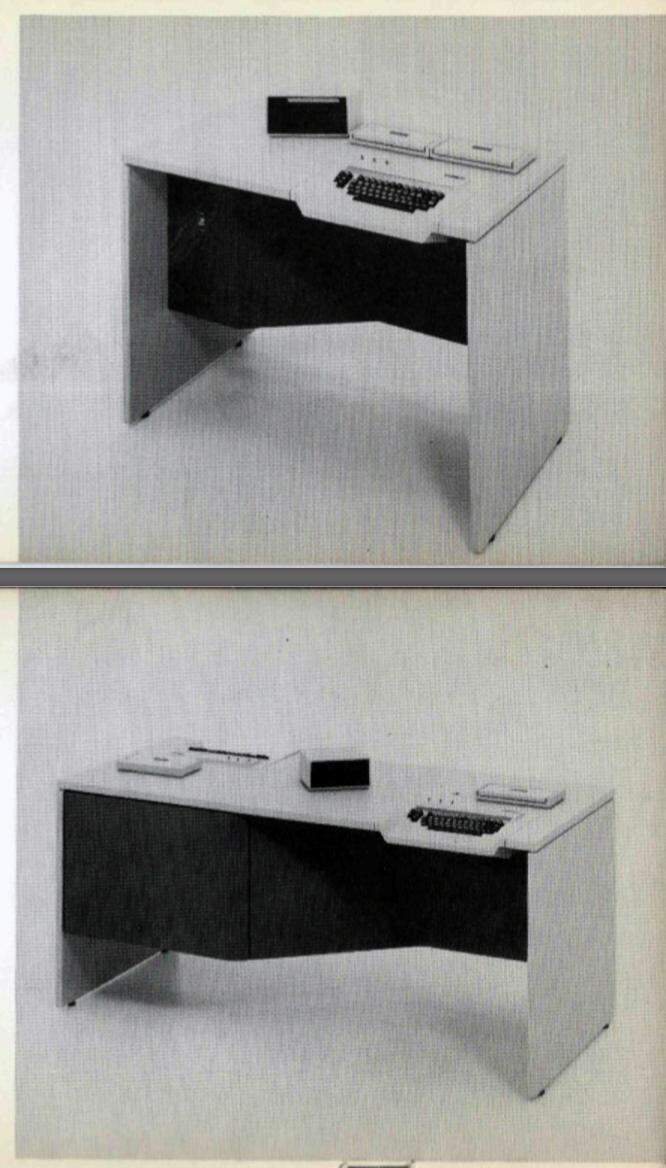
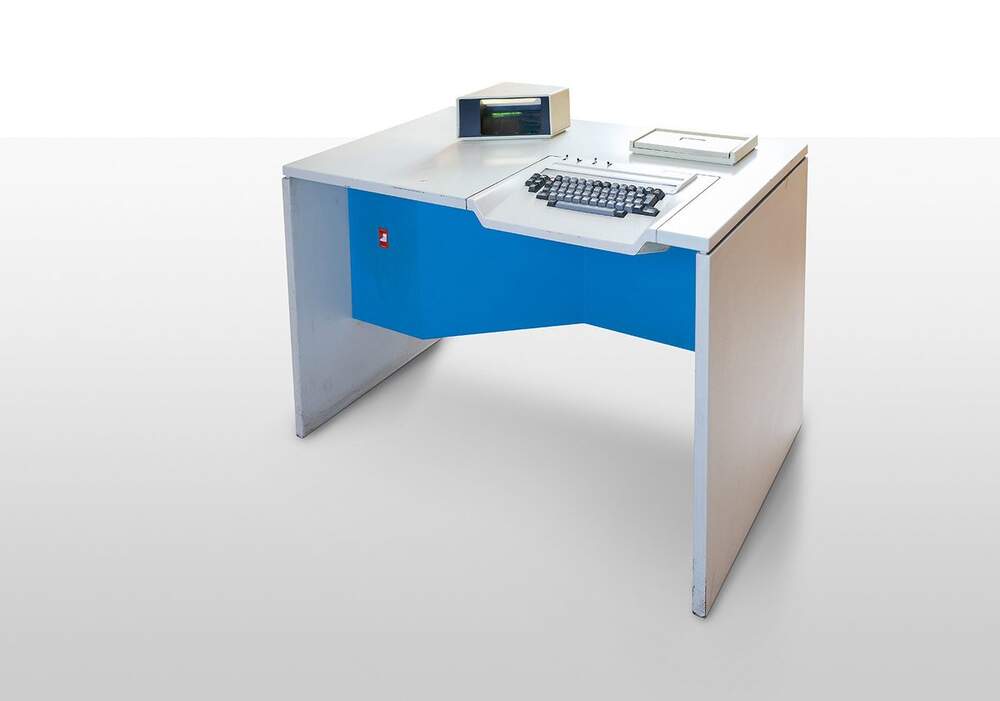
IBM 5252 split a slightly bigger screen in a slightly different way.
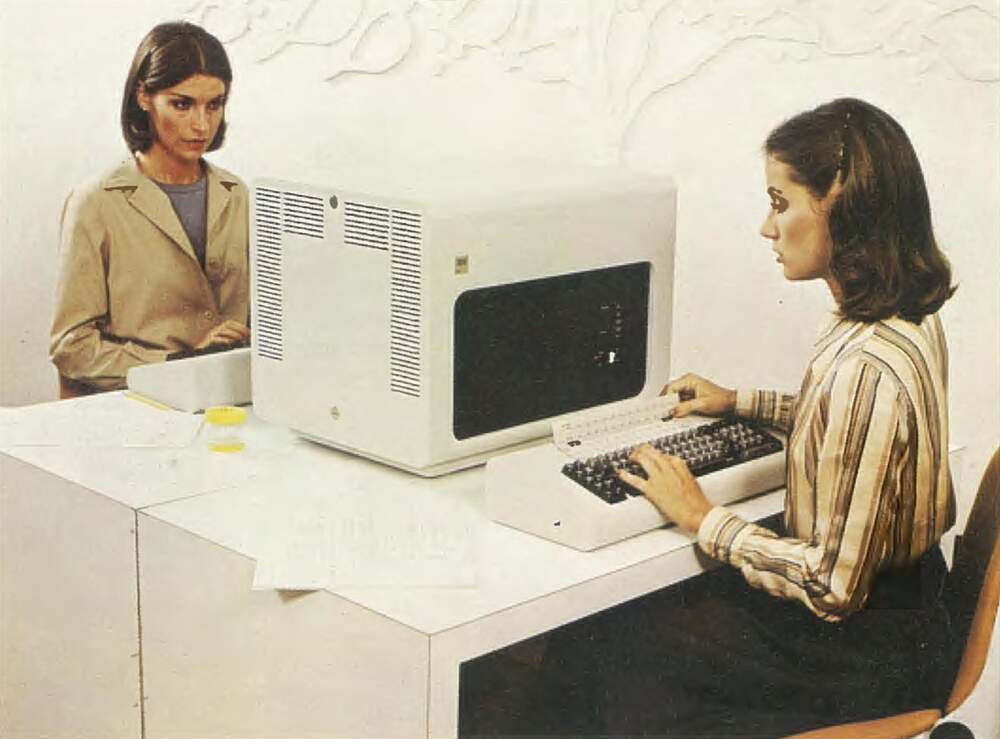
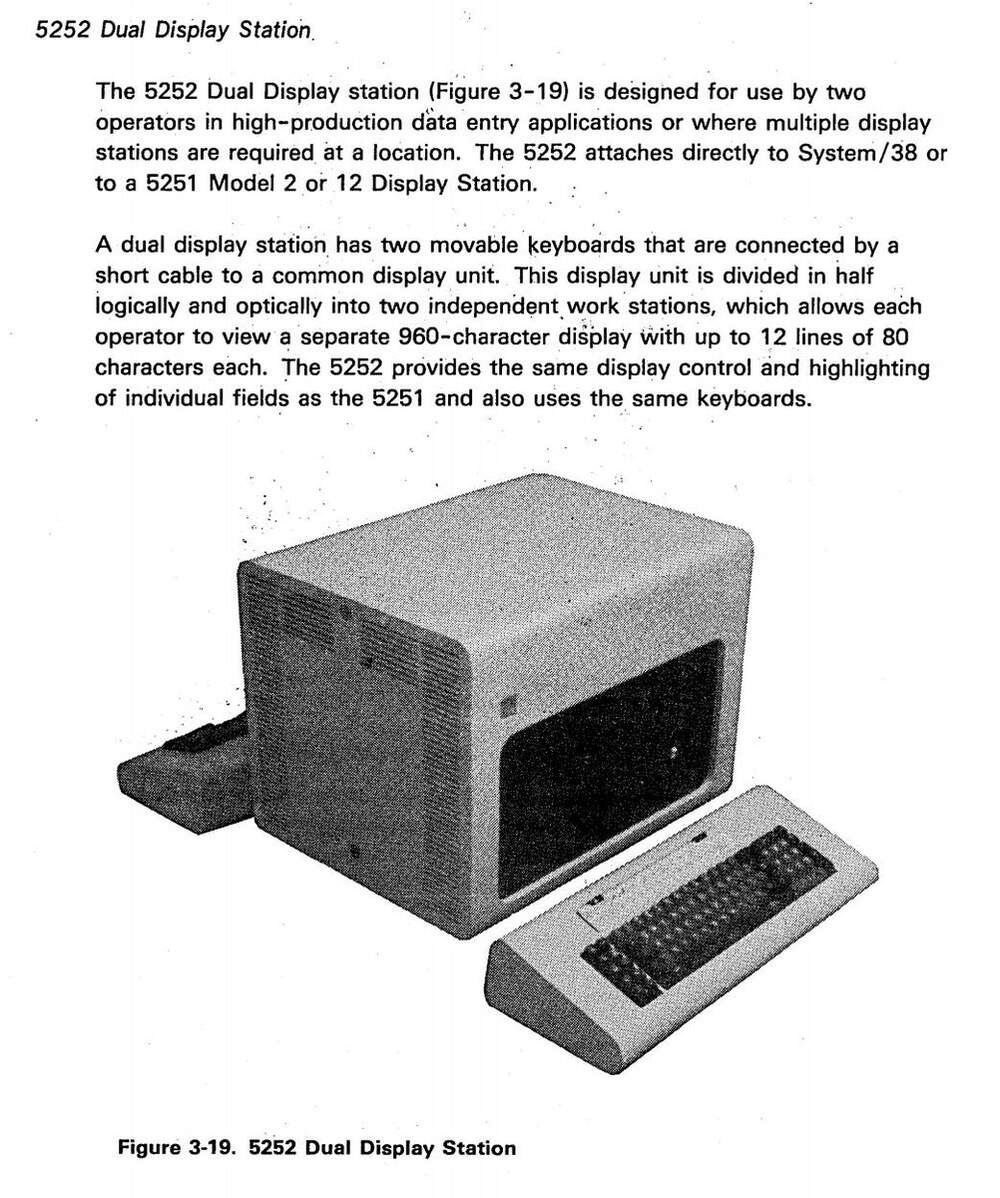
I don’t know much about this Inforex terminal, but I know that even on a screen so small, an error that says only ERROR is not an excuse.
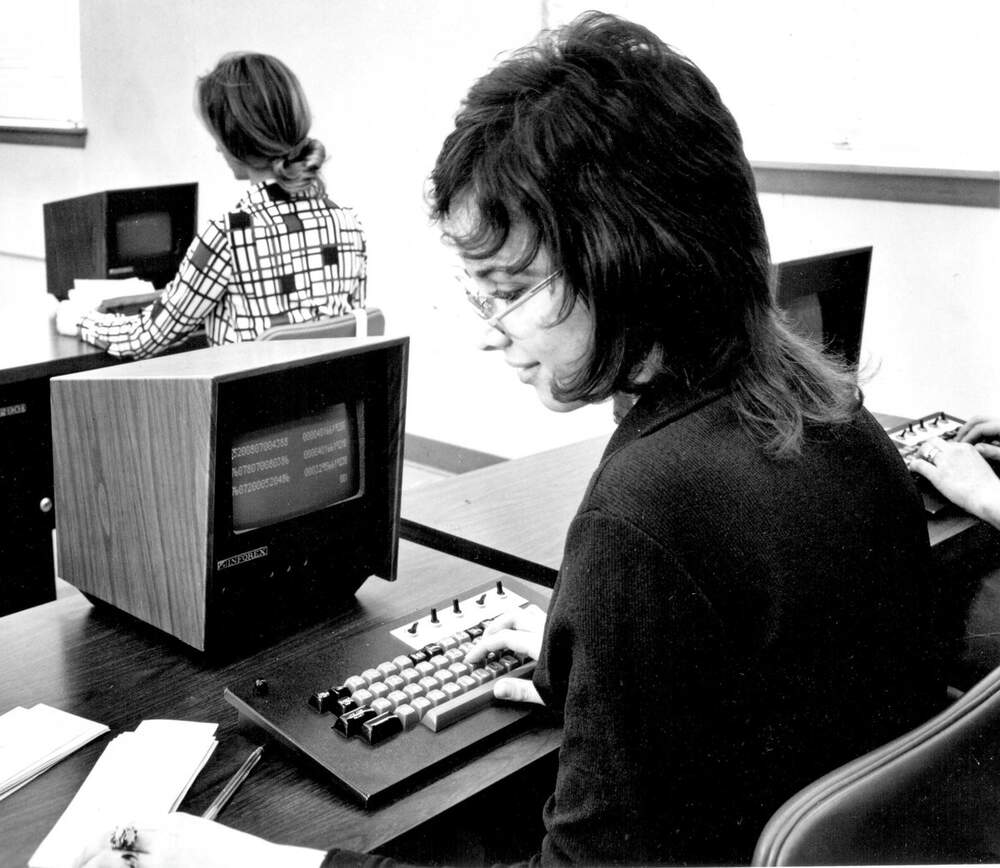
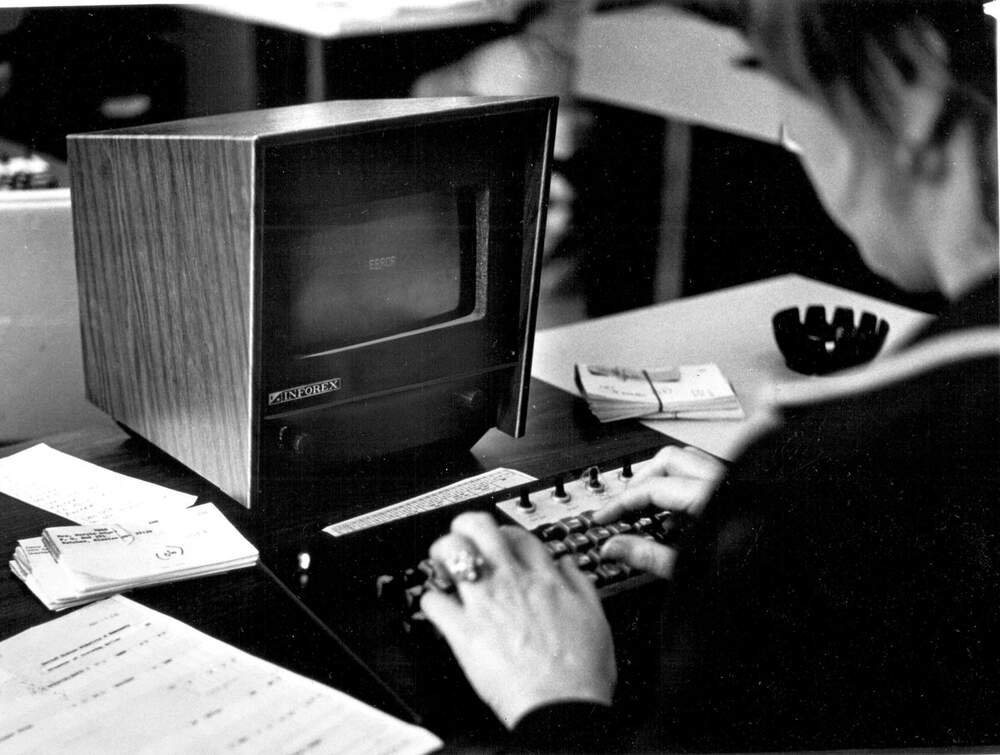
Mohawk Data Sciences System 2400 (1973) had a very pretty green screen and if that keyboard is permanently slanted, I am in love.

MicroOffice RoadRunner – “the five-pound computer aimed at the mobile professional” from 1983. Its display was 80 characters, but only 8 lines. (Love the cartridge indentations below the display.)
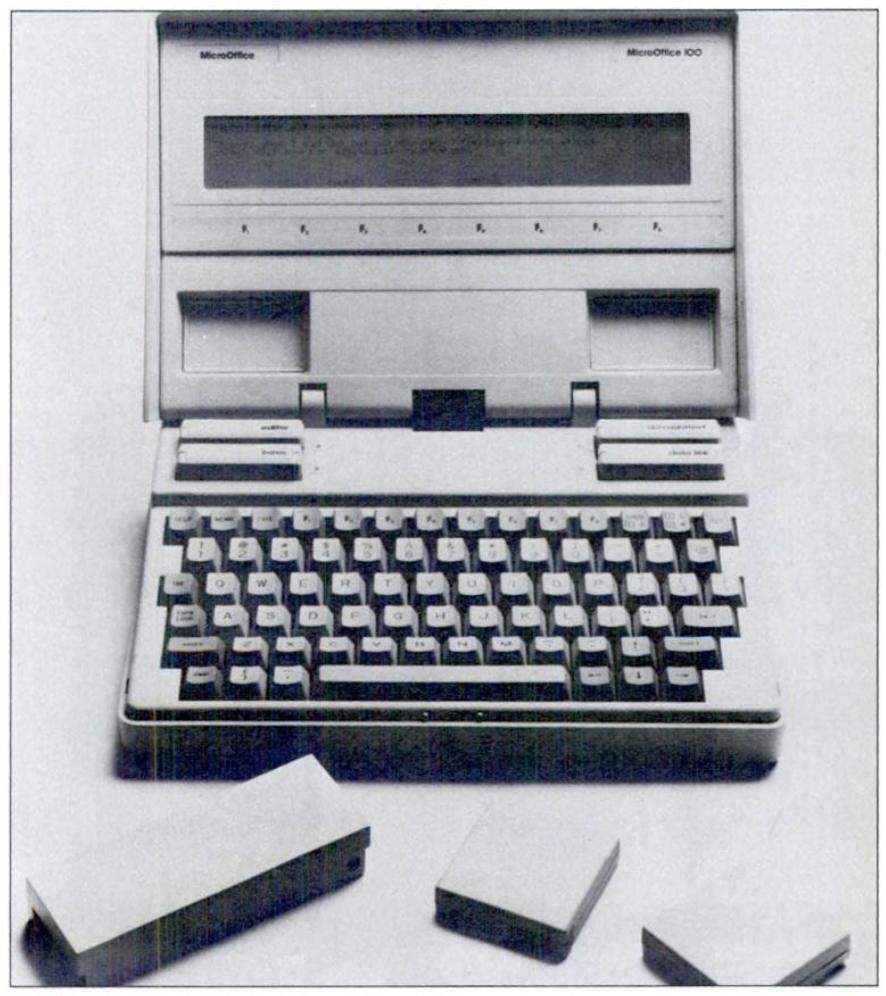
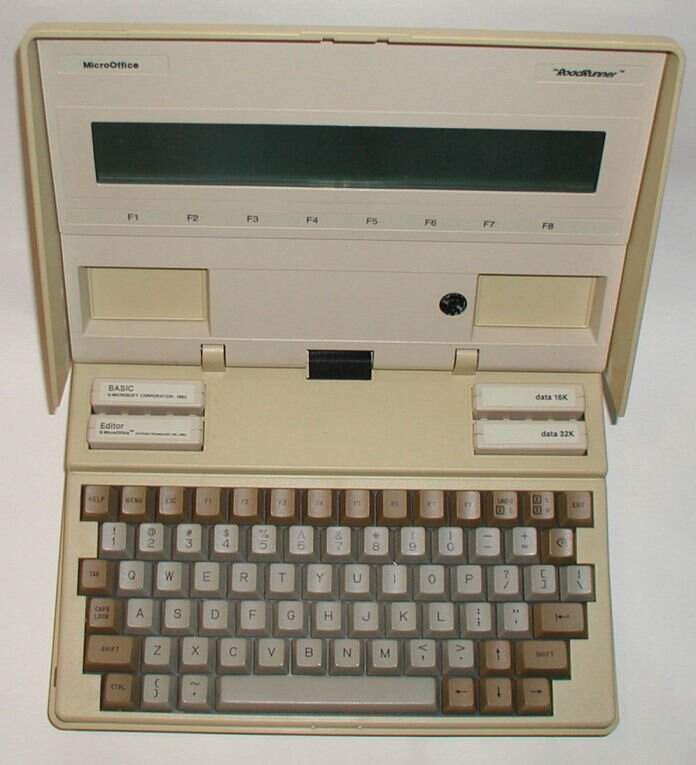
VYDEC 2000 word processor! A glorious 12-line display (*)!
(*) fine print: “4 lines of status and command areas”
(*) fine print: “4 lines of status and command areas”
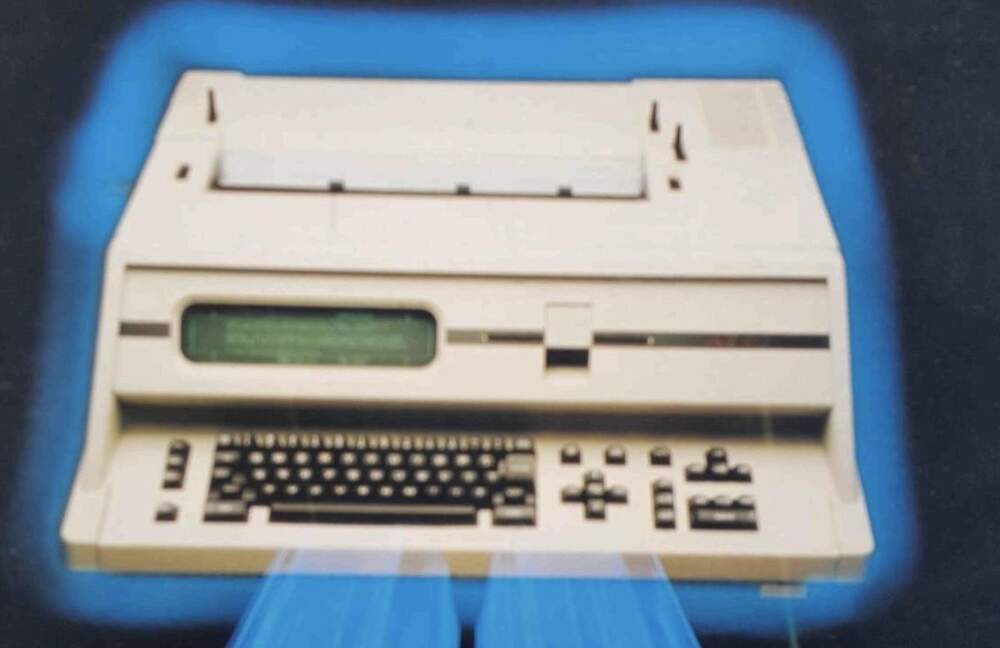
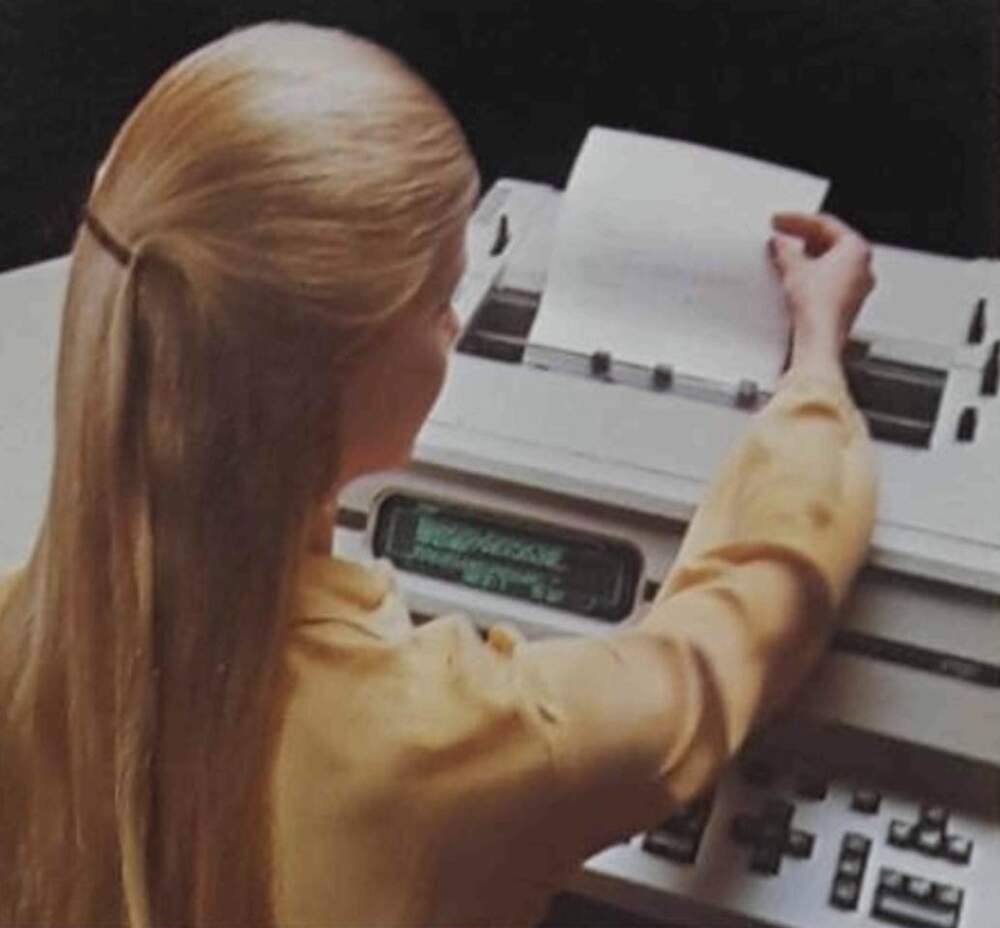
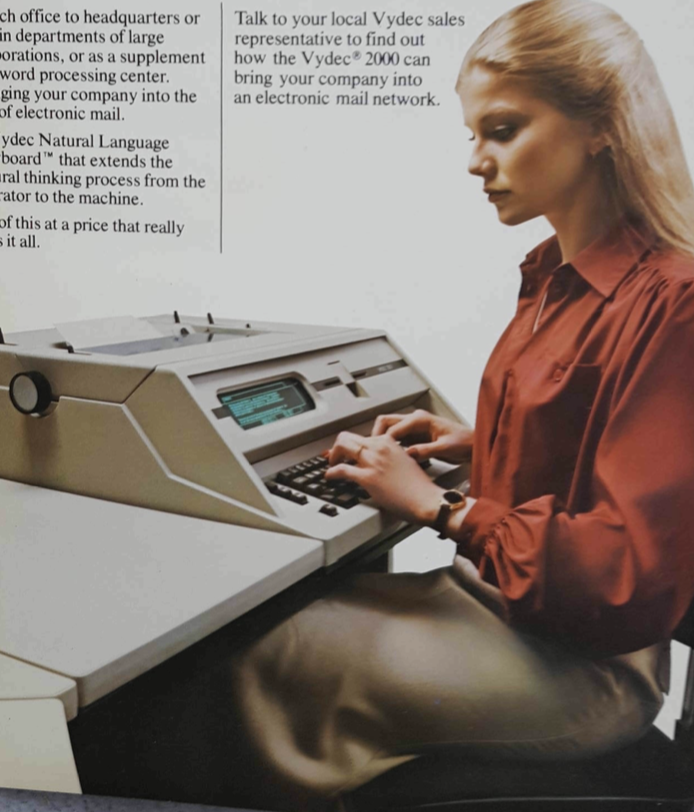
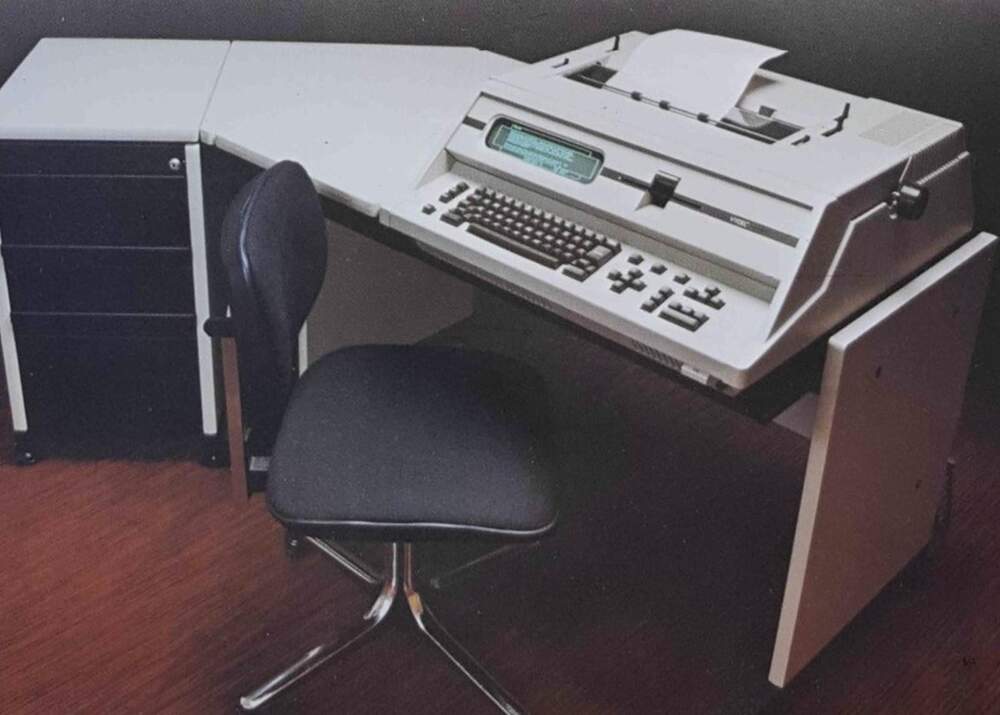
TI Insight Series 10 was introduced in 1981. It had 40×24 characters, on a 5½" “swivel” CRT screen.
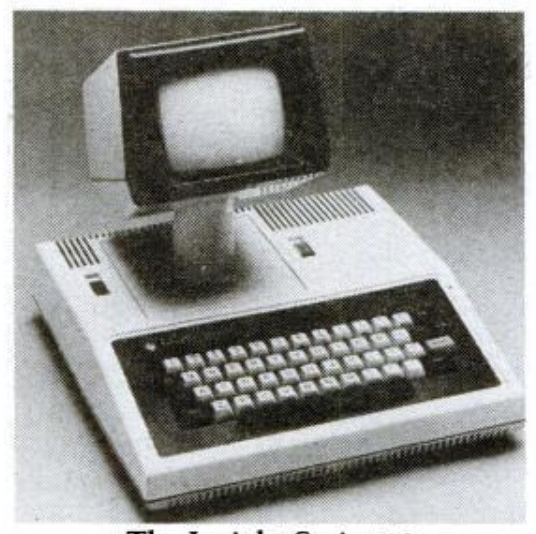
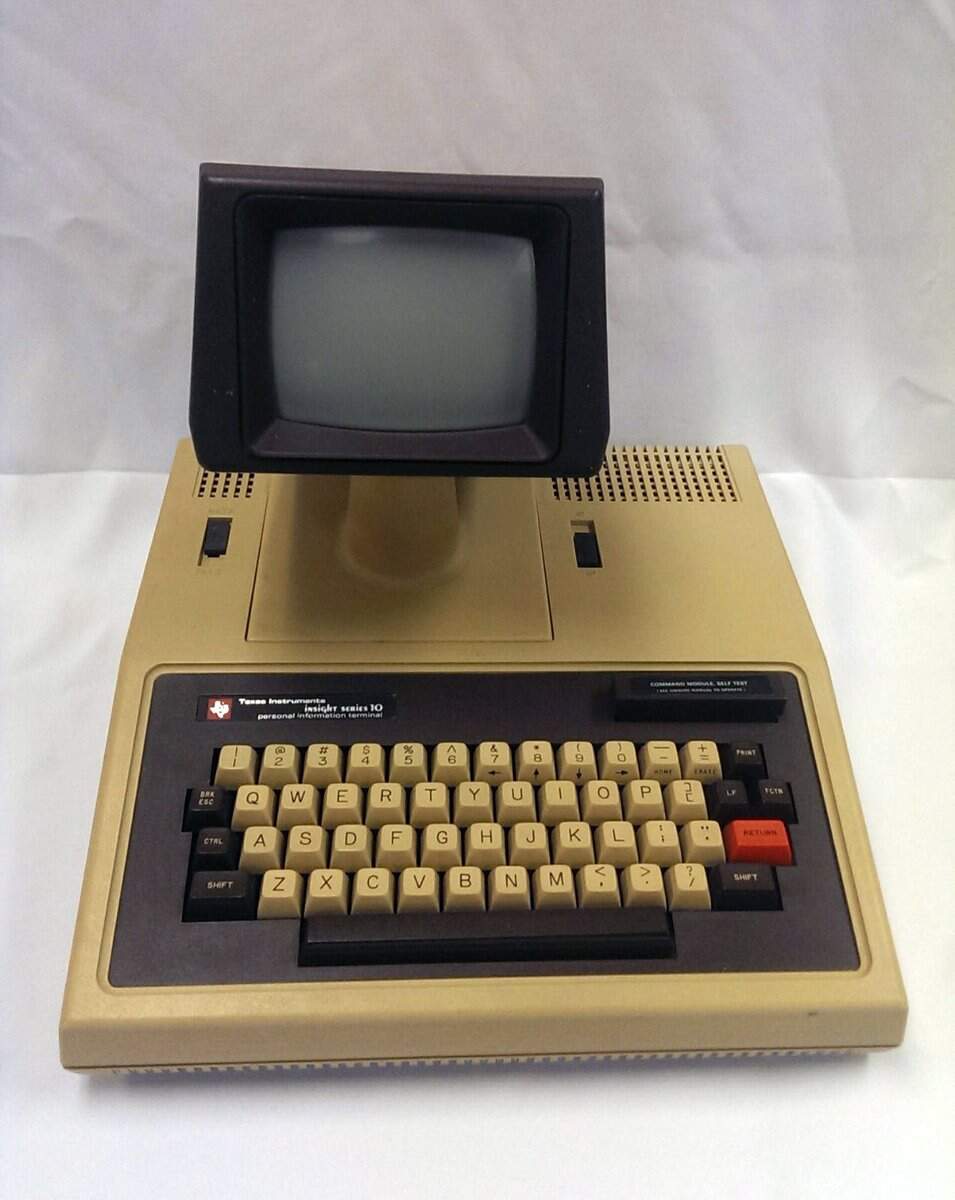
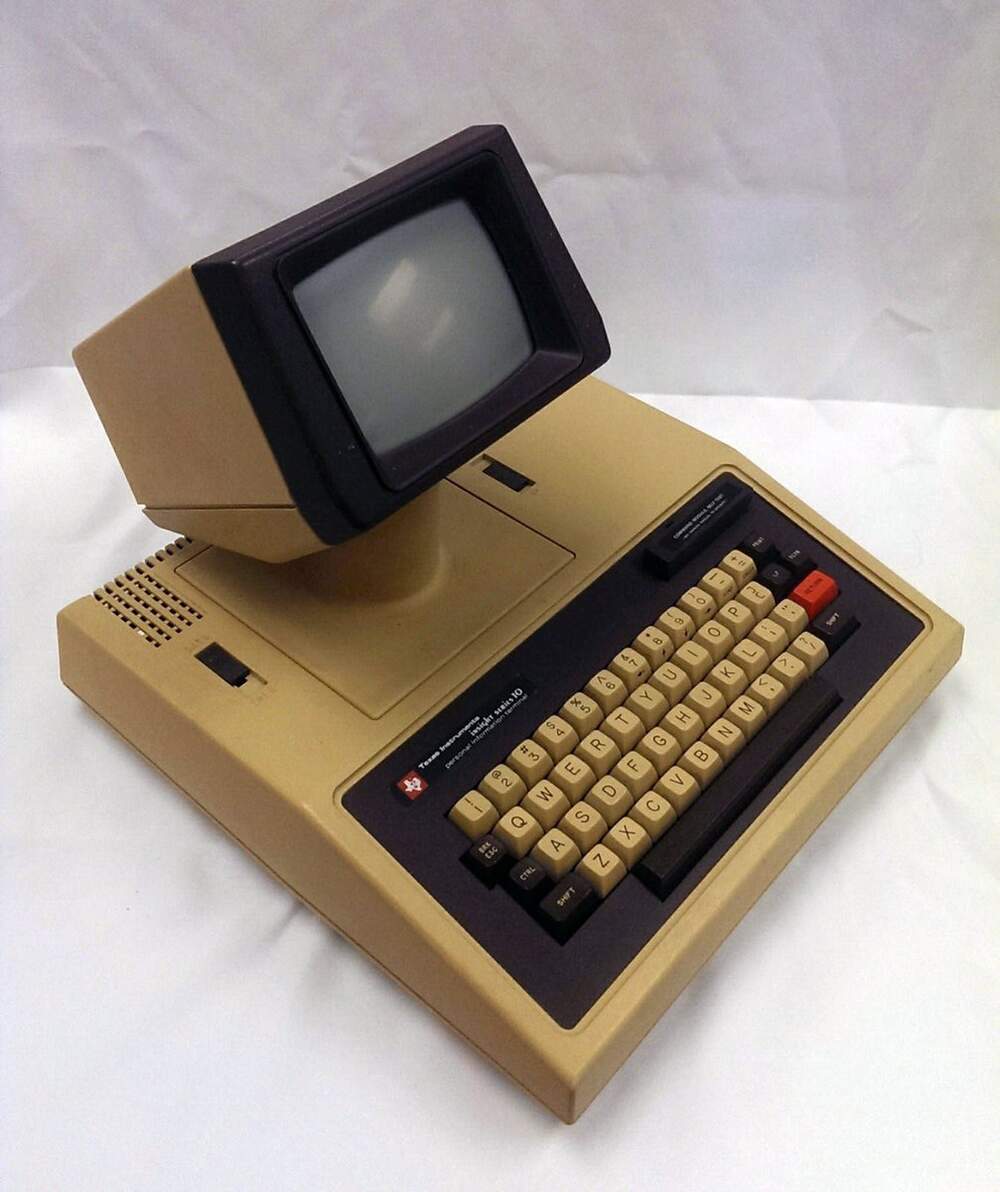
The IBM 1015 Inquiry Display terminal was relatively similar spec-wise – a 5½" display of 40×30 characters – but much, much older. The screen still looked like a radar tube, betraying its origins. “Erasure time is 6 seconds.” (Be still, my heart.)
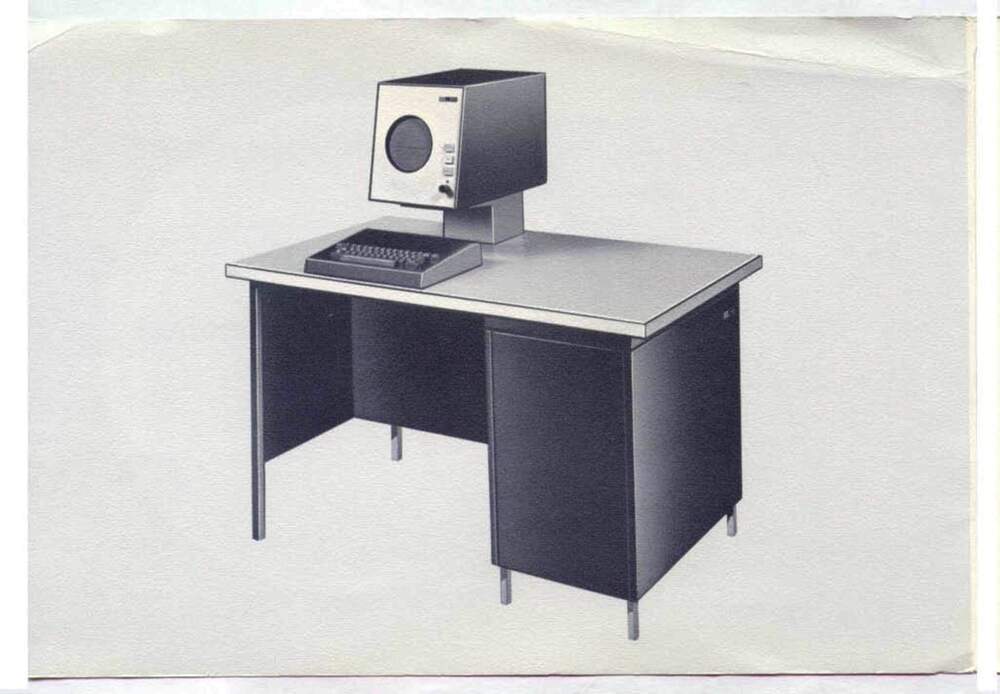
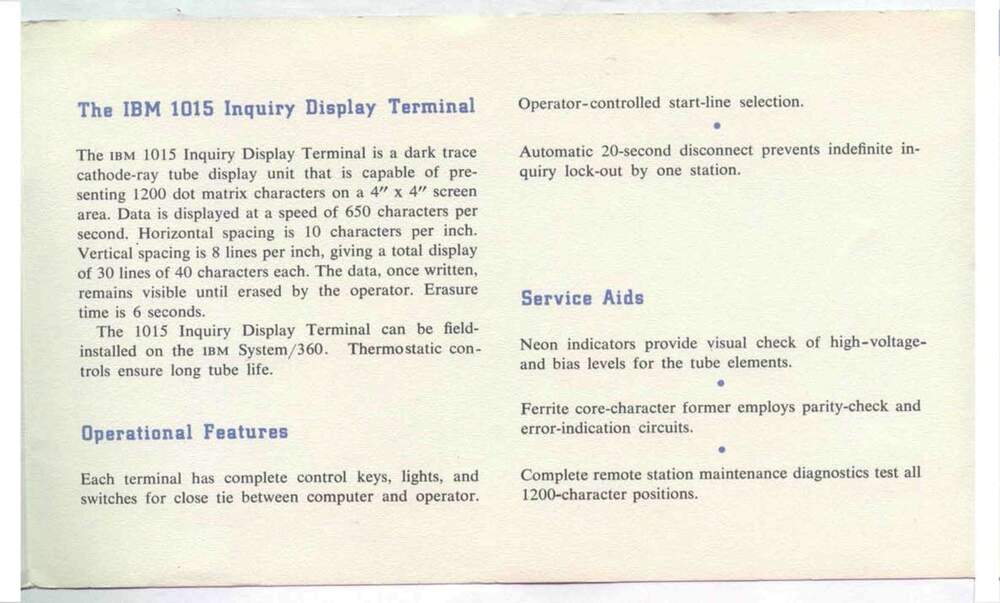
Up until a point, there were so few characters in displays, that you could just brag about the number. This red Burroughs “SELF-SCAN” display is a “256-character display” (today, we would call it 32×8 instead).
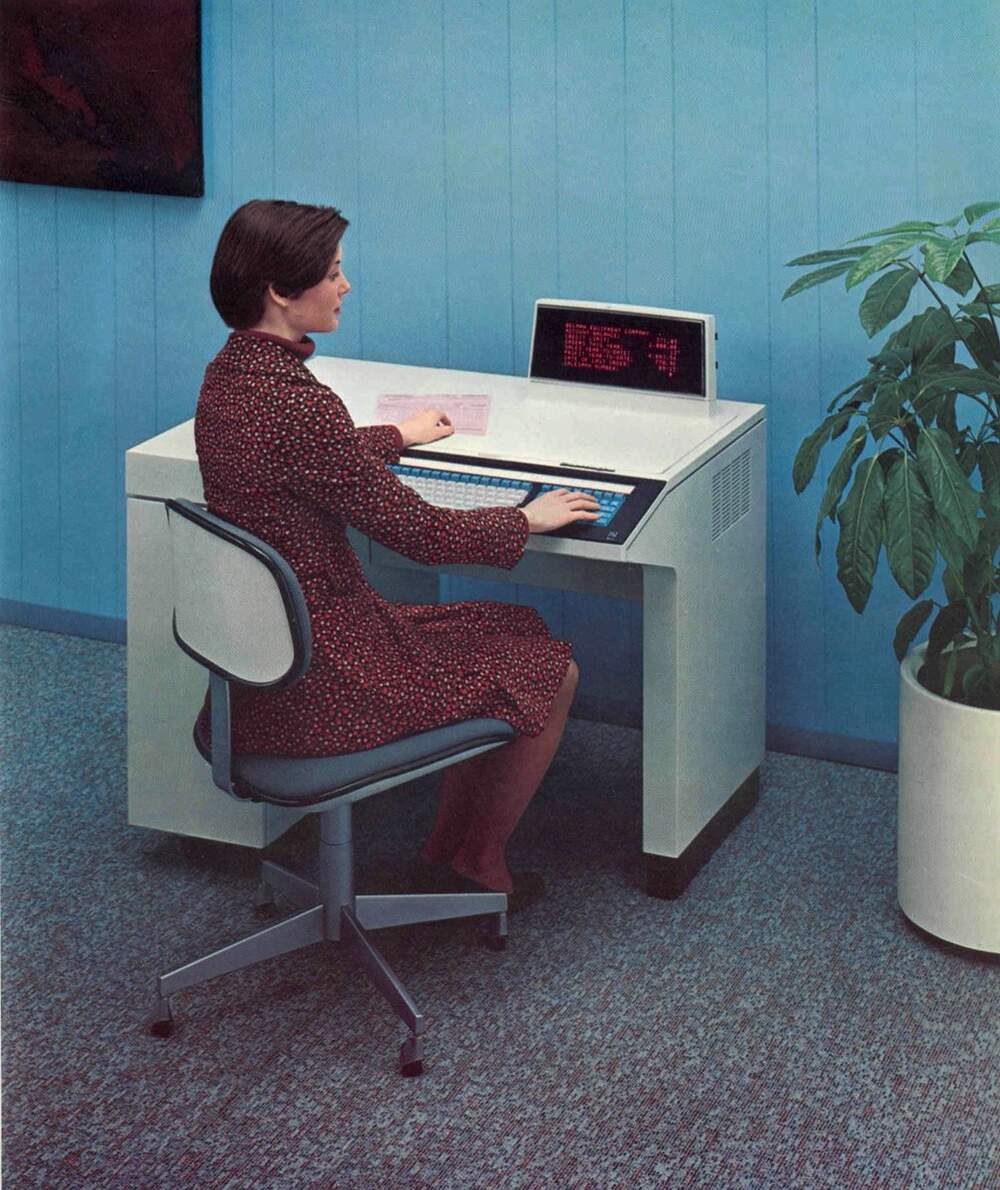
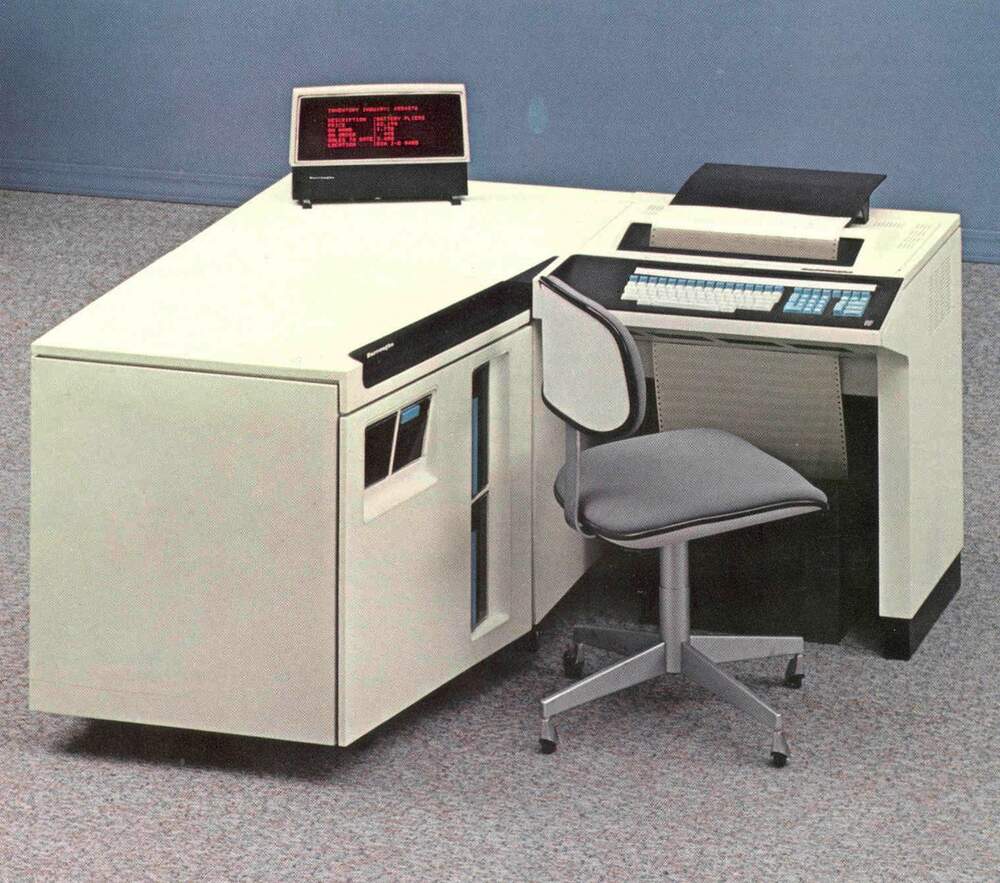
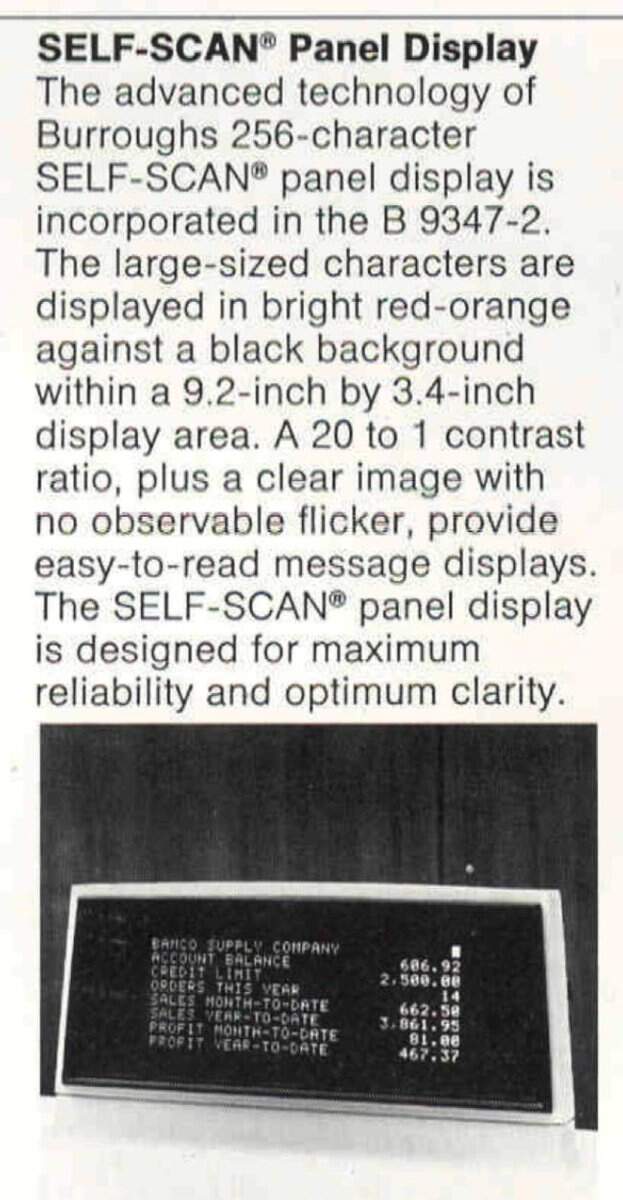
(At some point many years later, I saw a mention of a 1920-character display. I bet you can figure out what common text resolution this meant.)
Or this Owens-Illinois terminal (on the right) made things even more complicated. It was advertised as a “64×256 lines at 33.3 lines per inch” – but it’s 40×6 characters, it seems.
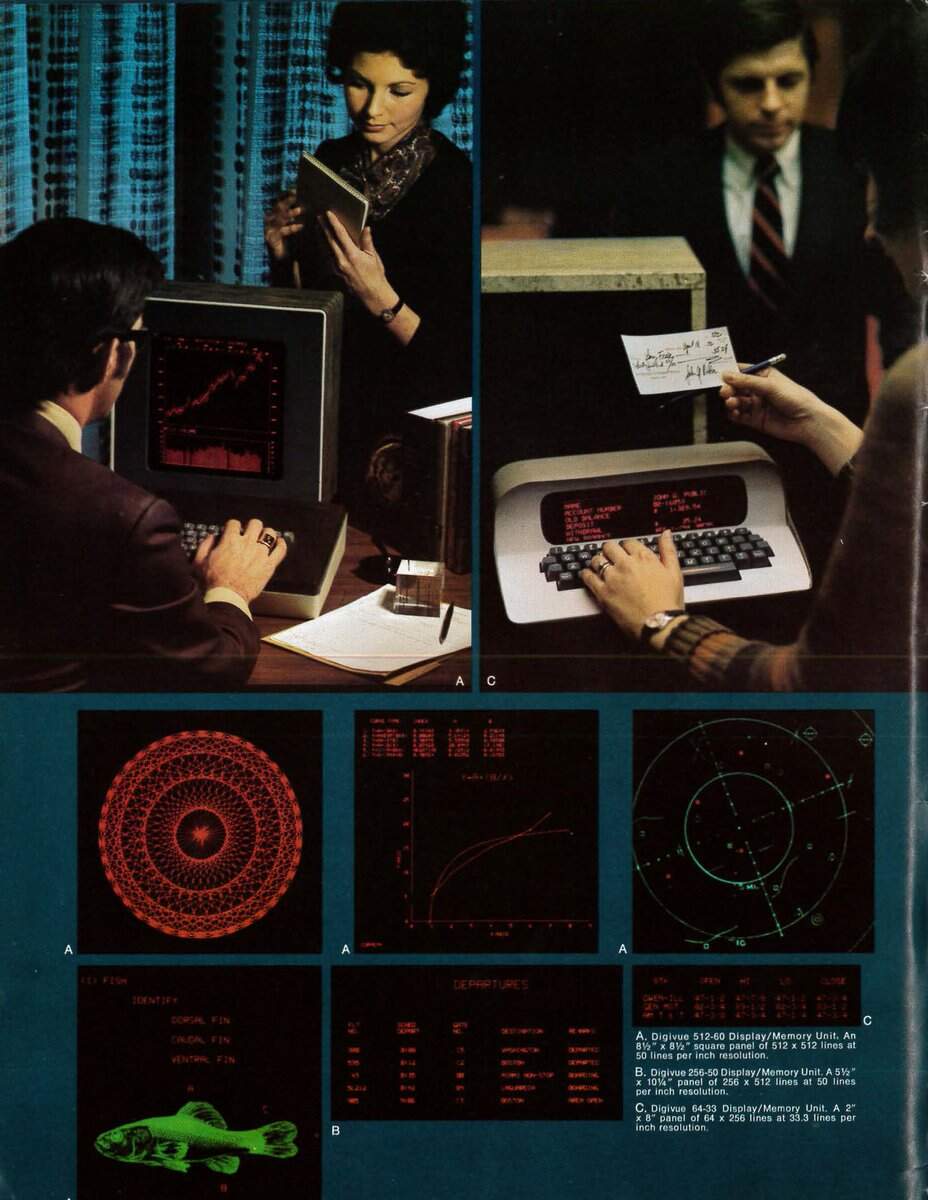
I feel the Osborne 1, Commodore SX 64, and IBM 5100 – all early portable machines with 5-inch displays – are relatively well-known, but should be included anyway.
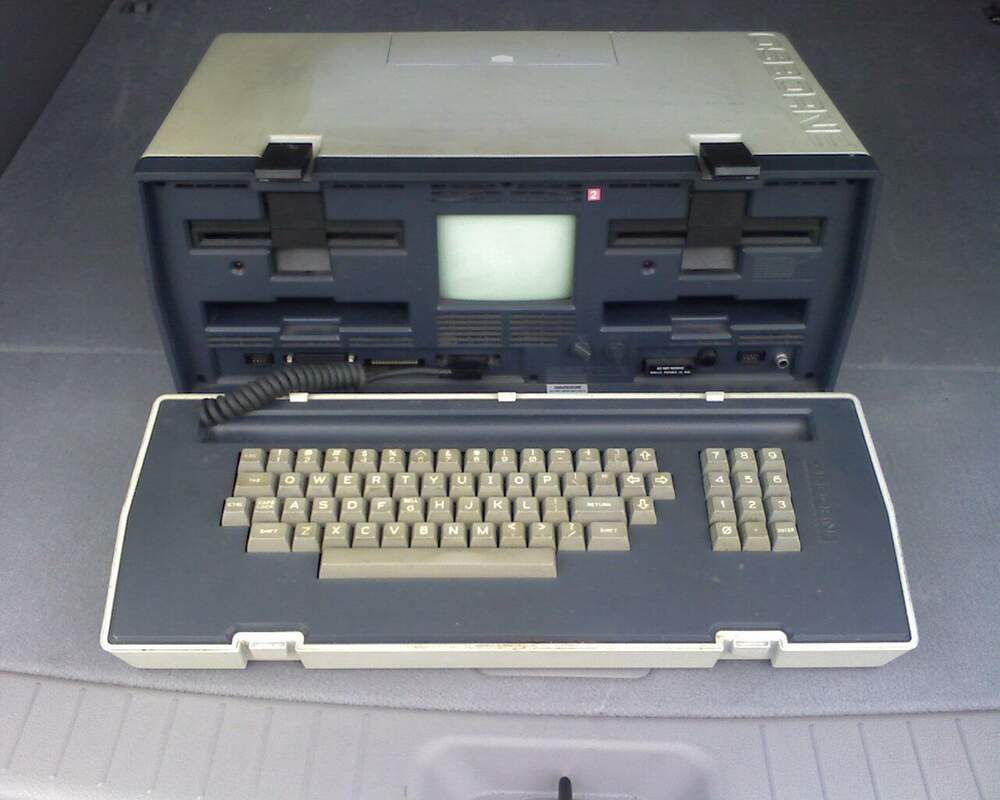
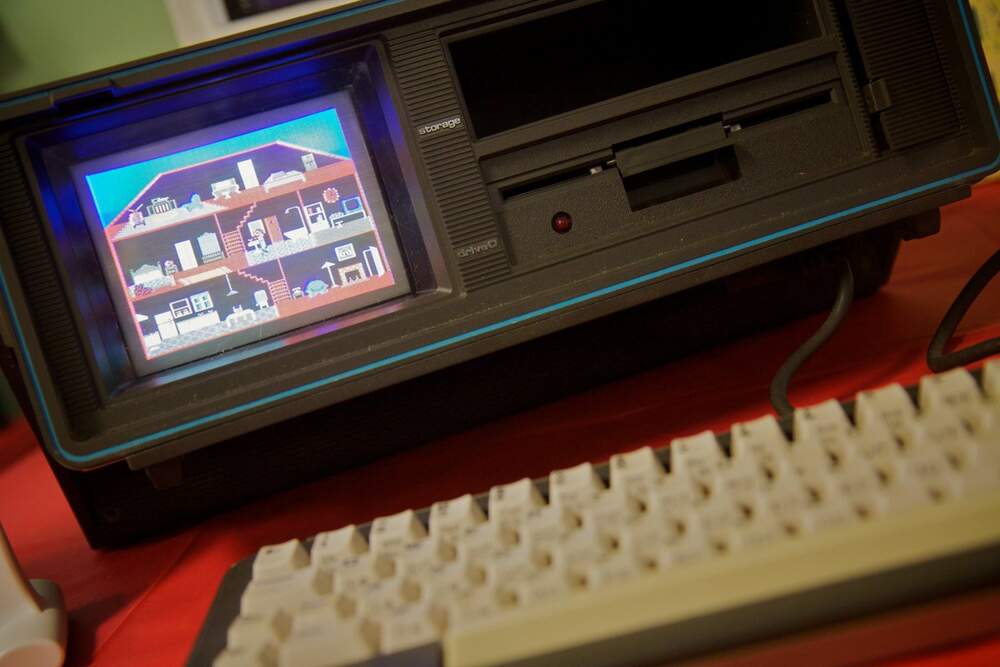
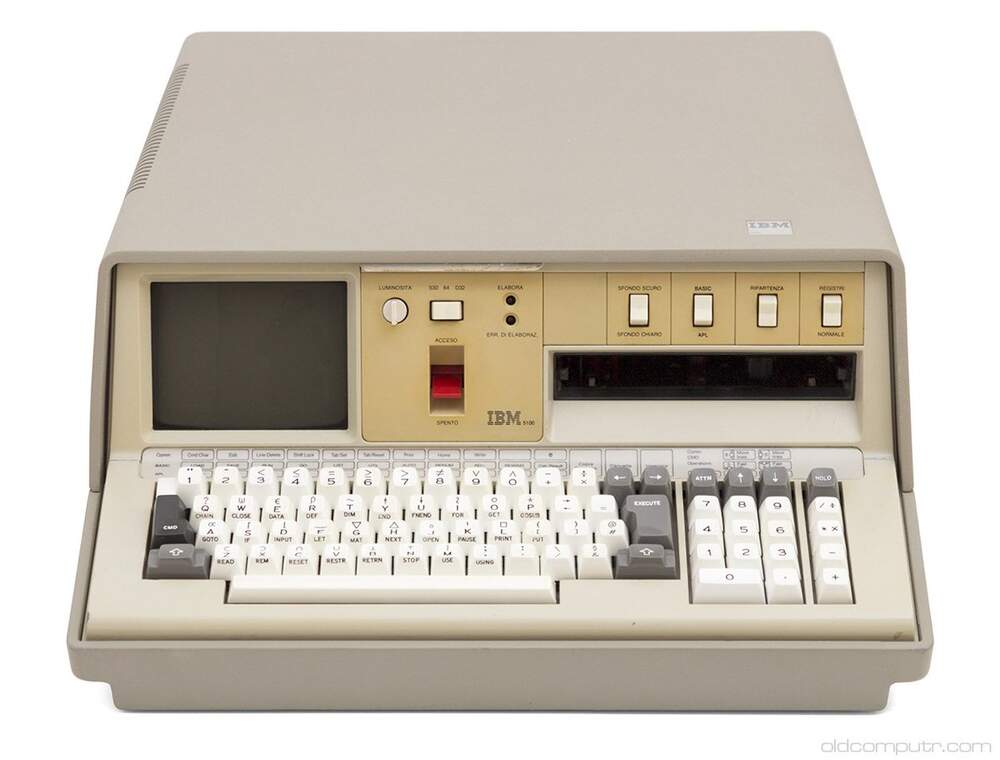
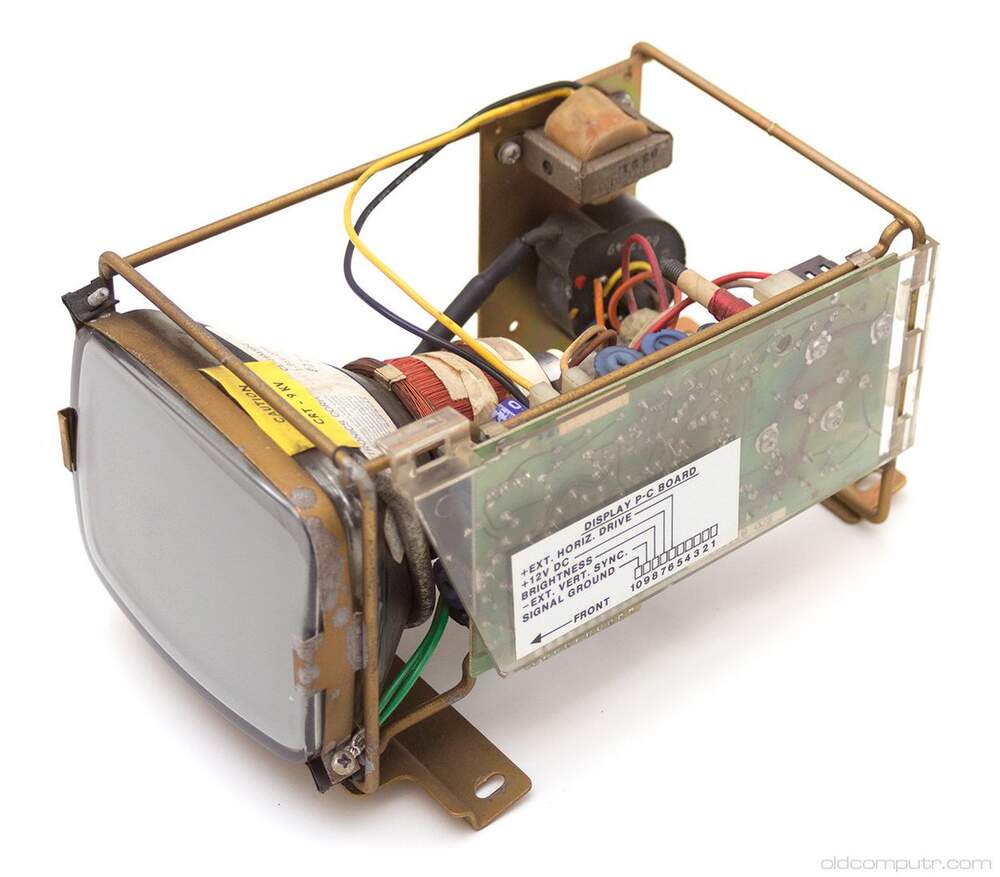
A budget mid-1970s IMSAI computer had all the components you’d recognize from early microcomputers… but in very, very different proportions. As far as I understand, this screen could still display 40×24, or even 80×24 characters? (They’d just be incredibly tiny.)
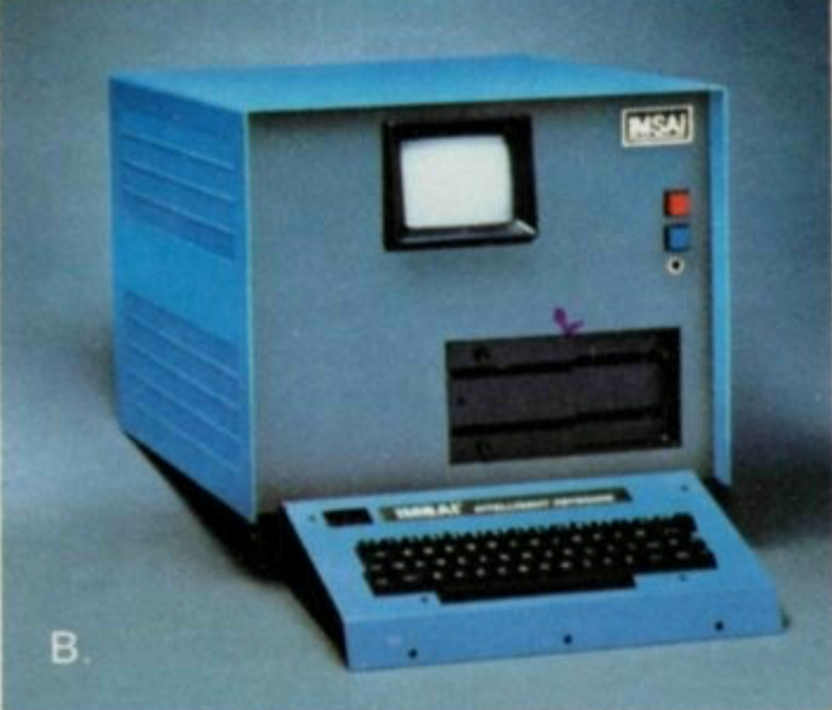
Berthold Fototype TPE 6001 had a gorgeous screen (*) and kind of an amazing keyboard. Sometimes the most wonderful computers were hidden in specialized areas. Here: phototypesetting.
(*) at least on the outside, of course
(*) at least on the outside, of course
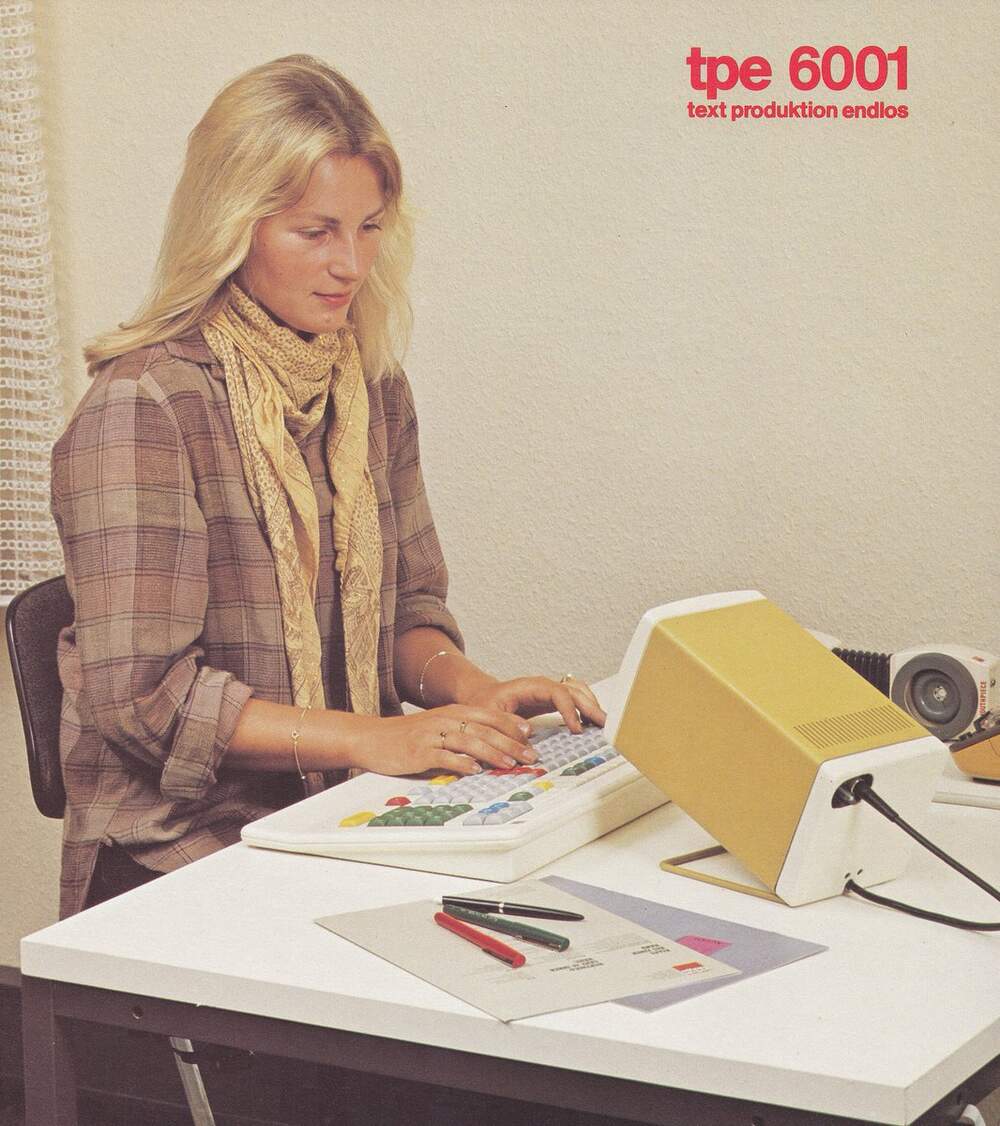
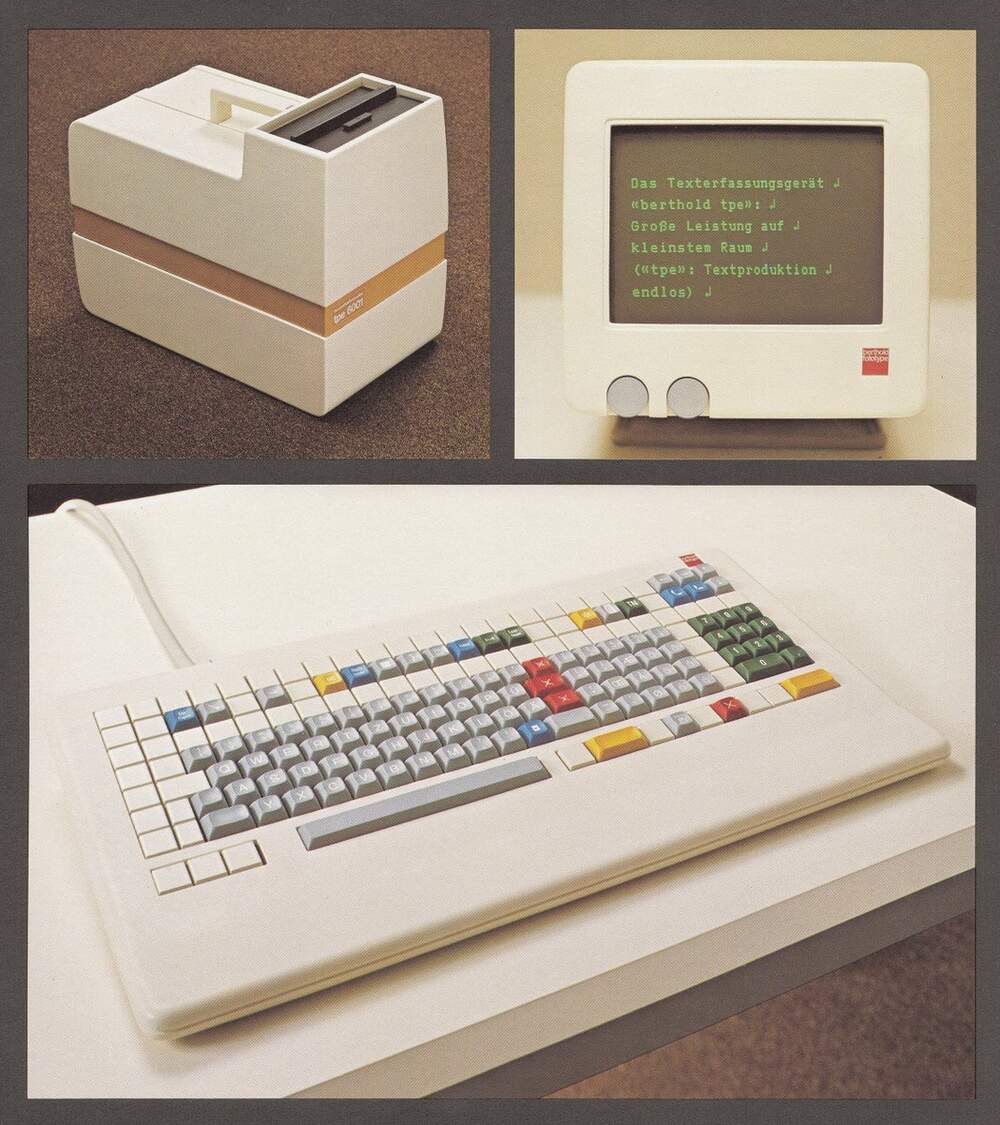
Up to 10 lines! Up to 198 characters! The smallest Bunker Ramo financial terminals were so small QWERTY just walked away from the whole deal.
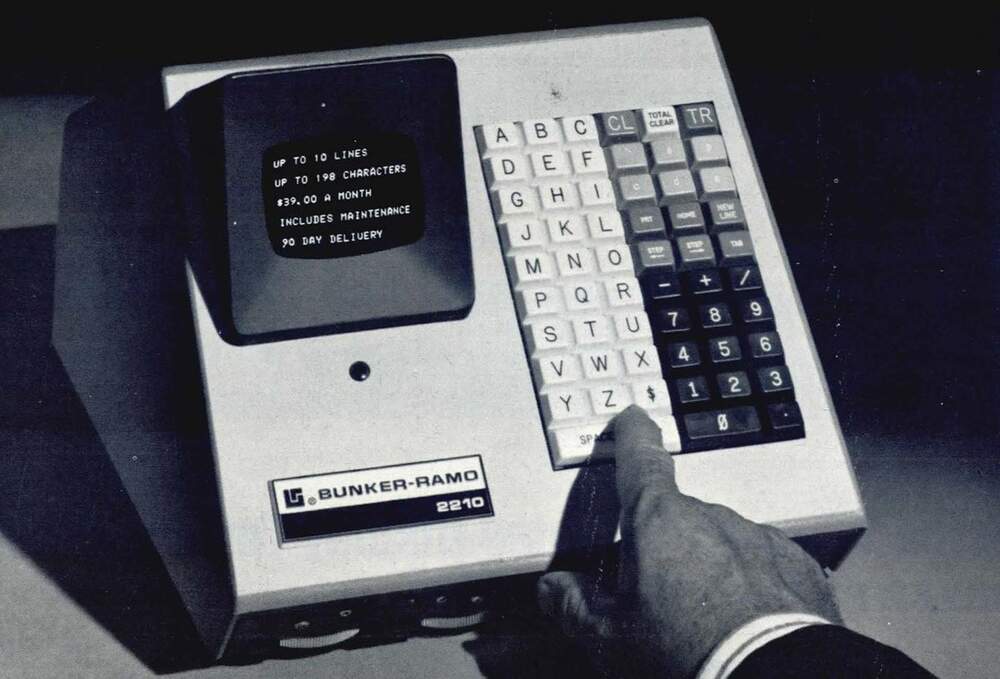
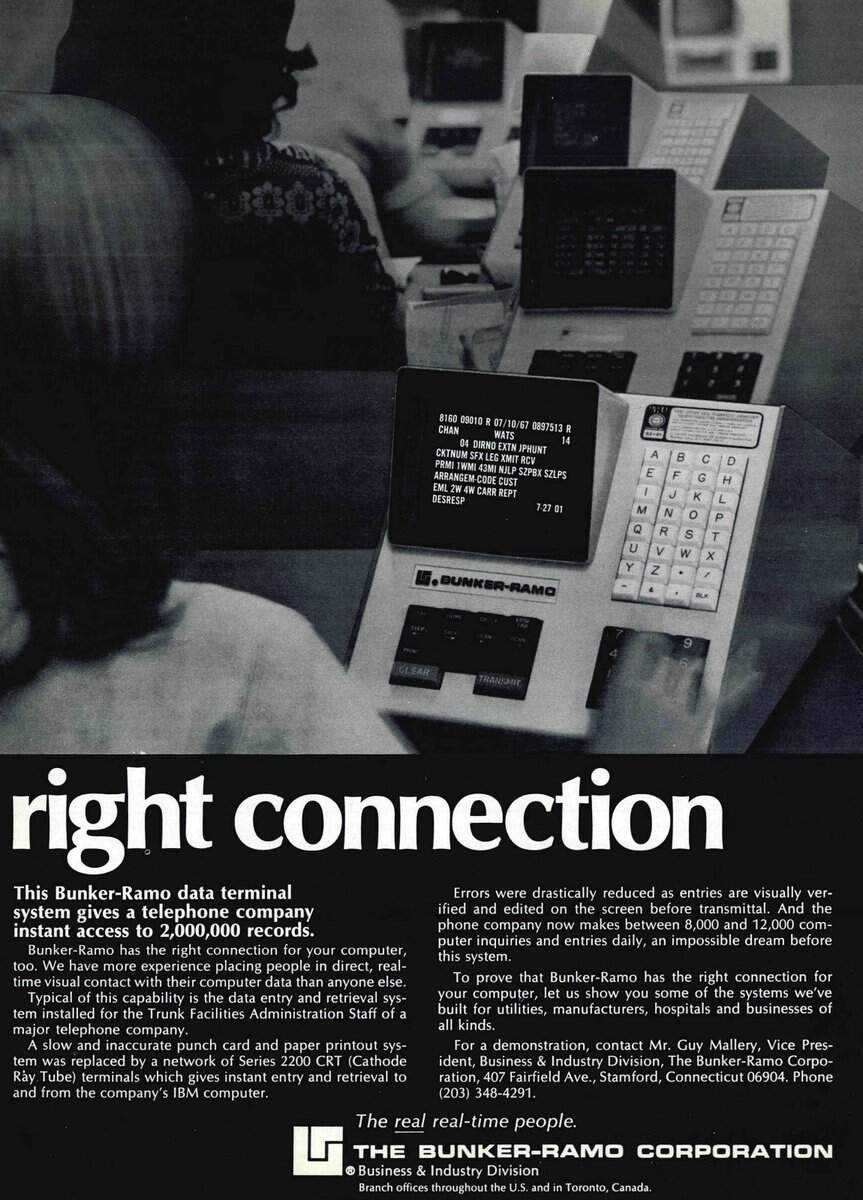
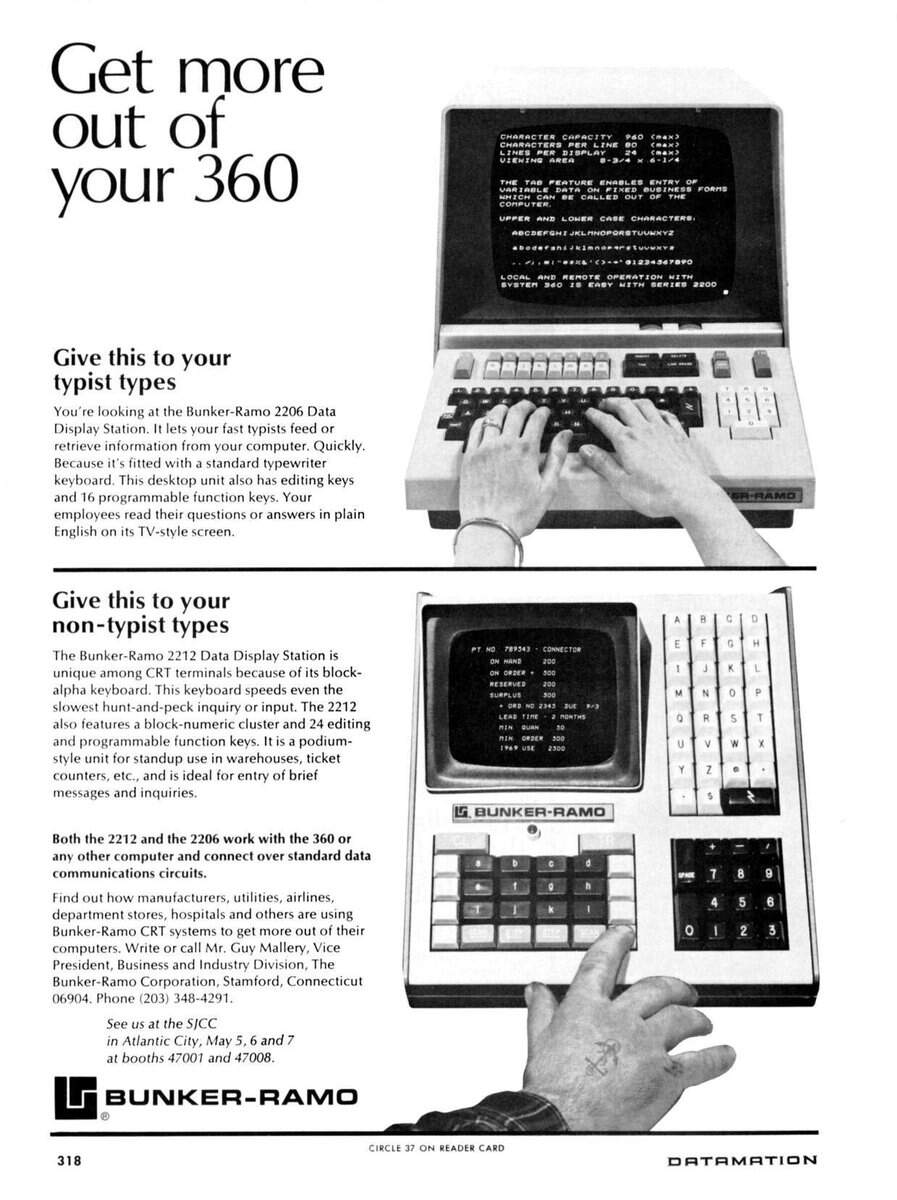
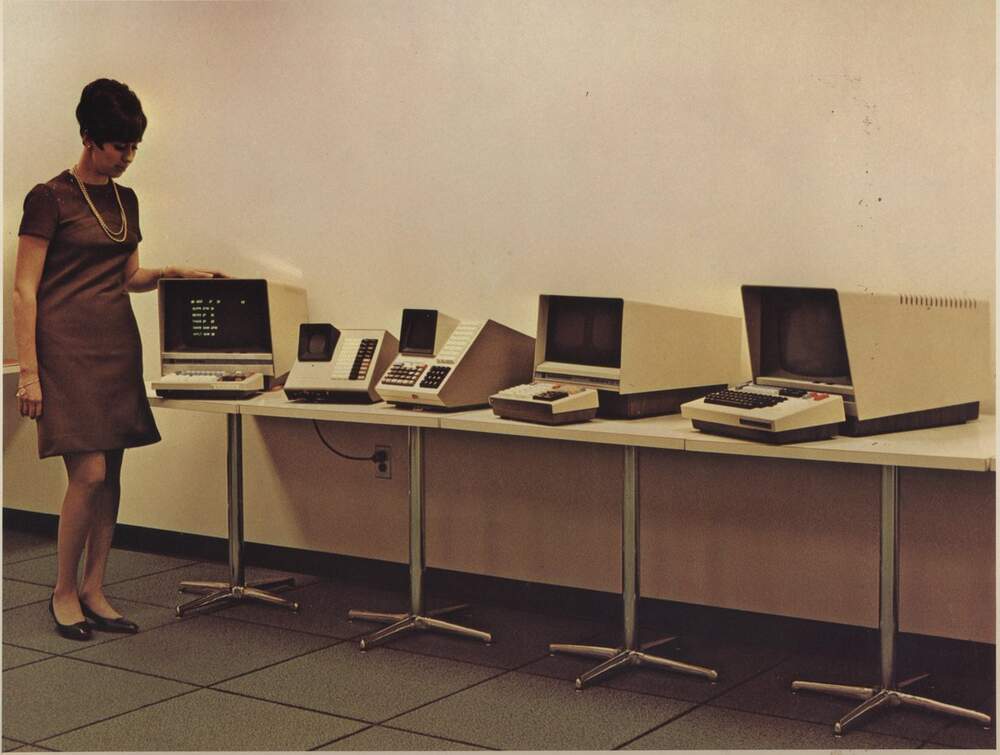
(Although some more fancy ones came with two screens for some reason?)
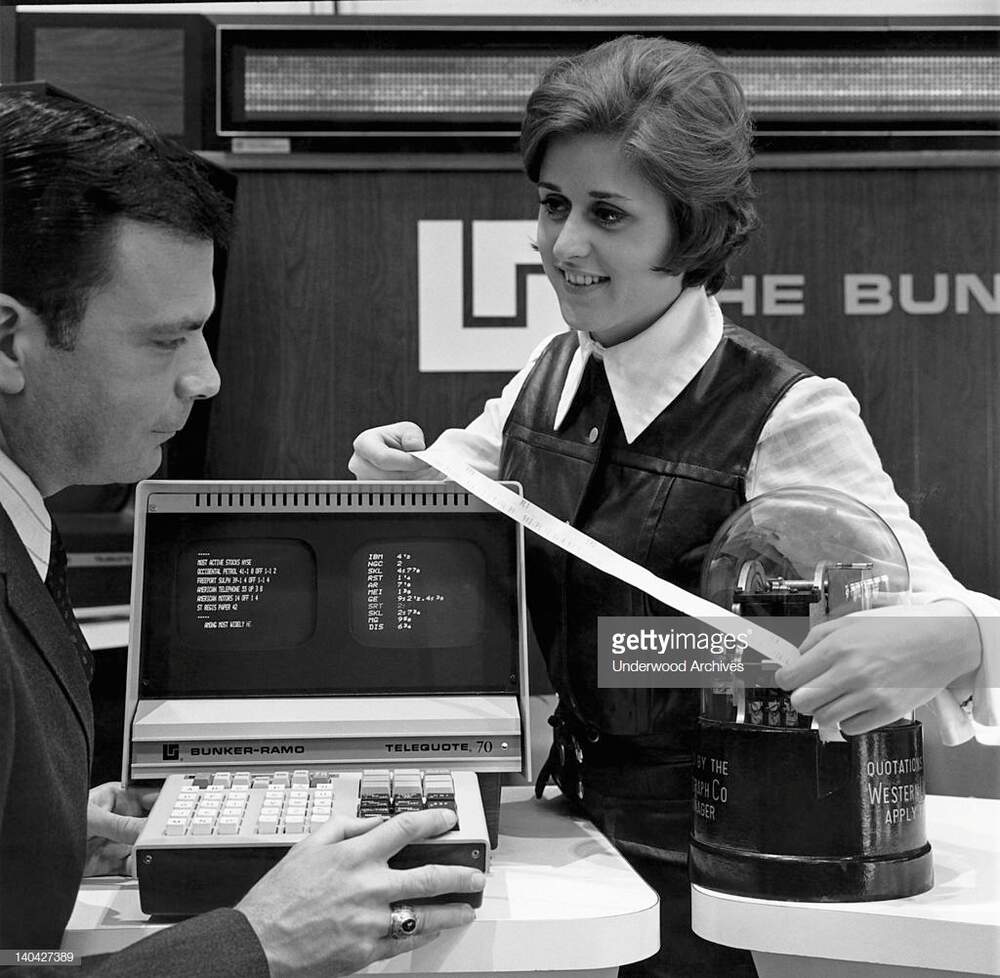
This SCM Cogito 240 calculator had a 64-digit display. There were many more like it, but this one had – once more – a beautiful big bezel tricking you into seeing a much bigger display.
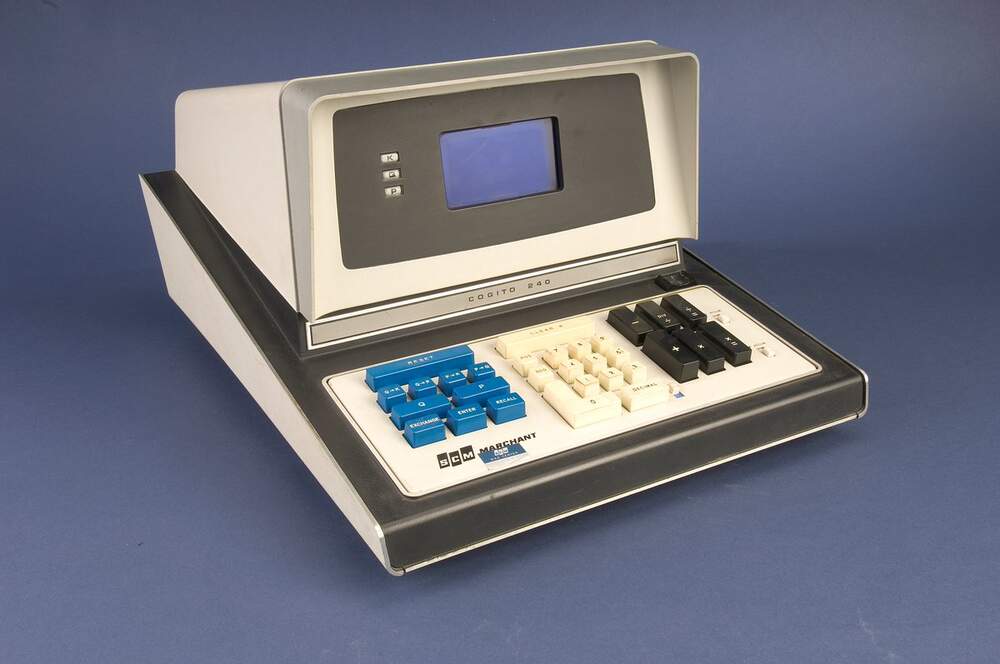
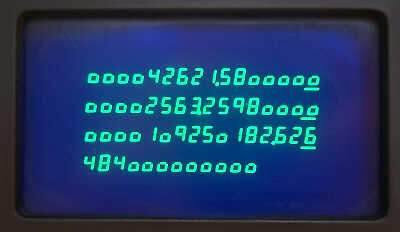
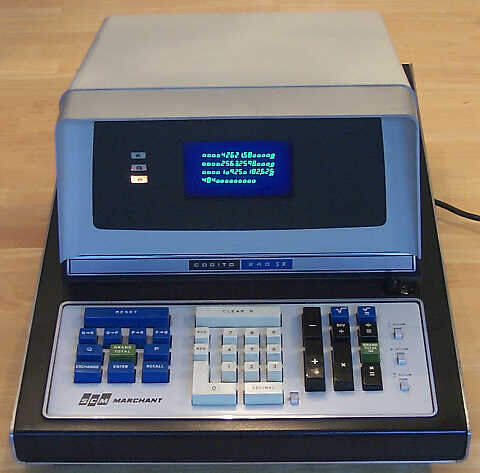
Some computers couldn’t decide whether they want to pretend the screen is bigger, or just own the small size. Either way, this Culler-Fried System from 1960s had a fantastic keyboard-to-screen ratio.
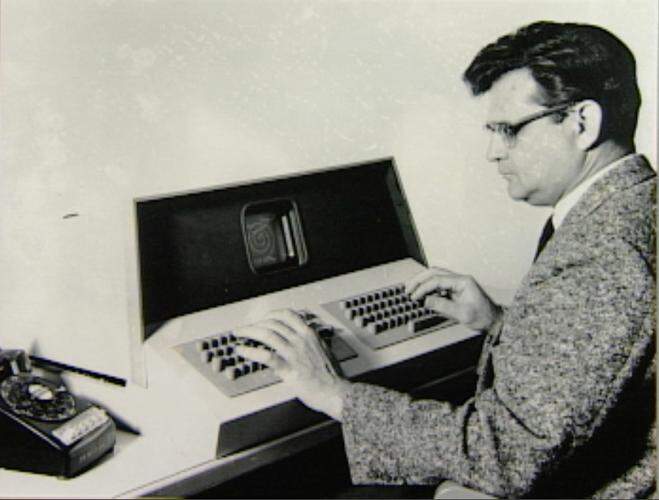
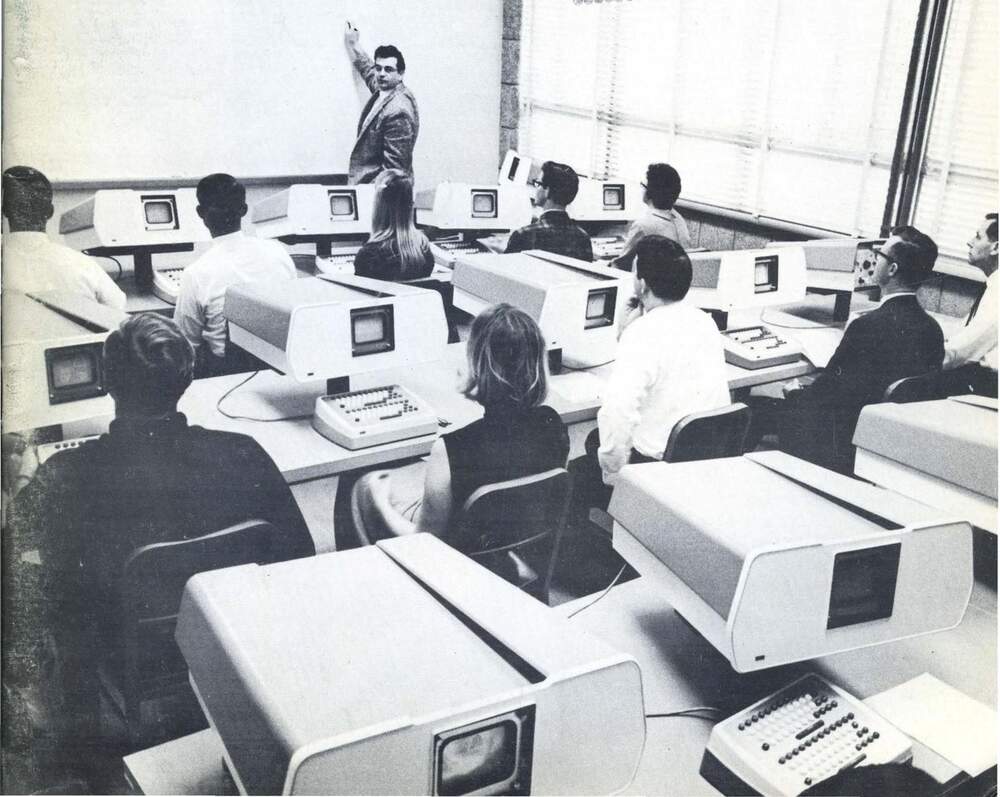
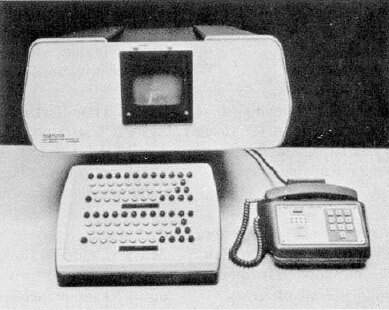
Digisplay, a 1972 “flat-screen image sandwich” had 512 *tiny* characters.
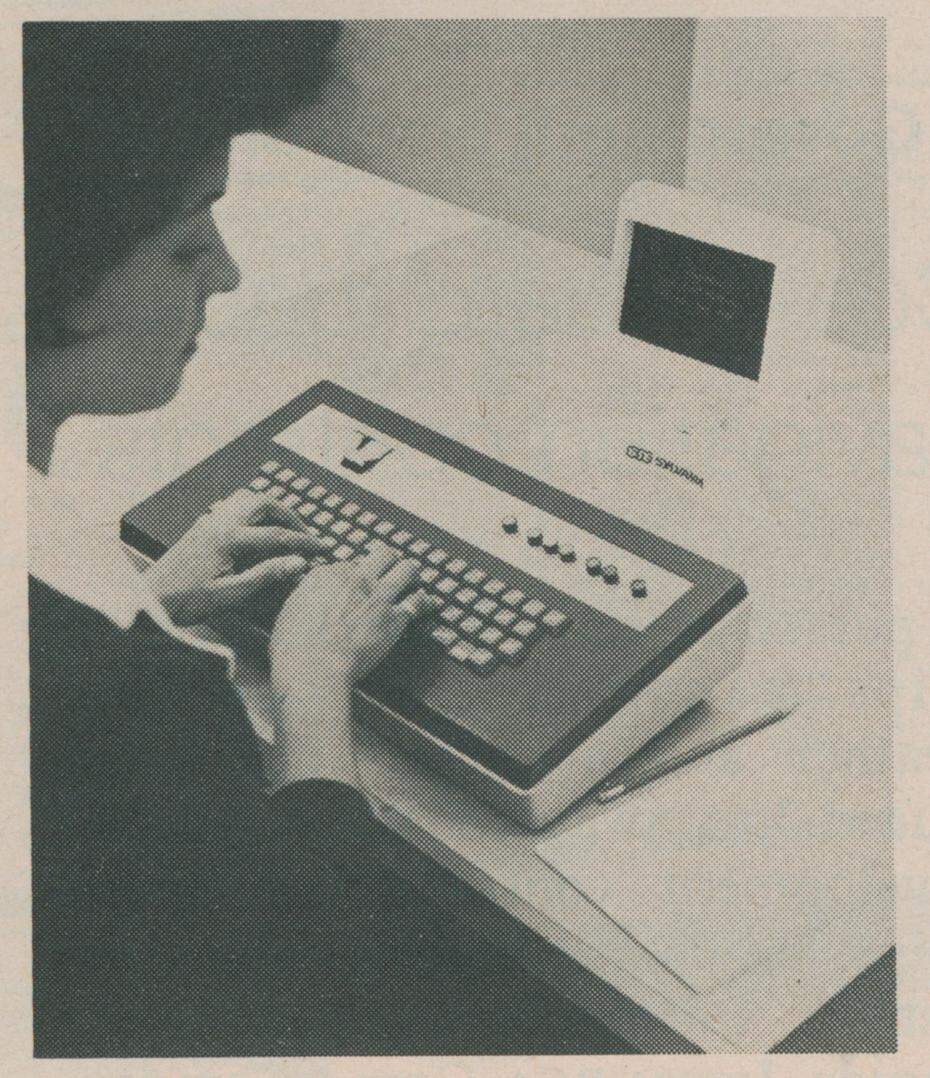
On the other hand – IBM 4700 financial system had a 5" display, but also a courtesy to come with a smaller keyboard to match it.
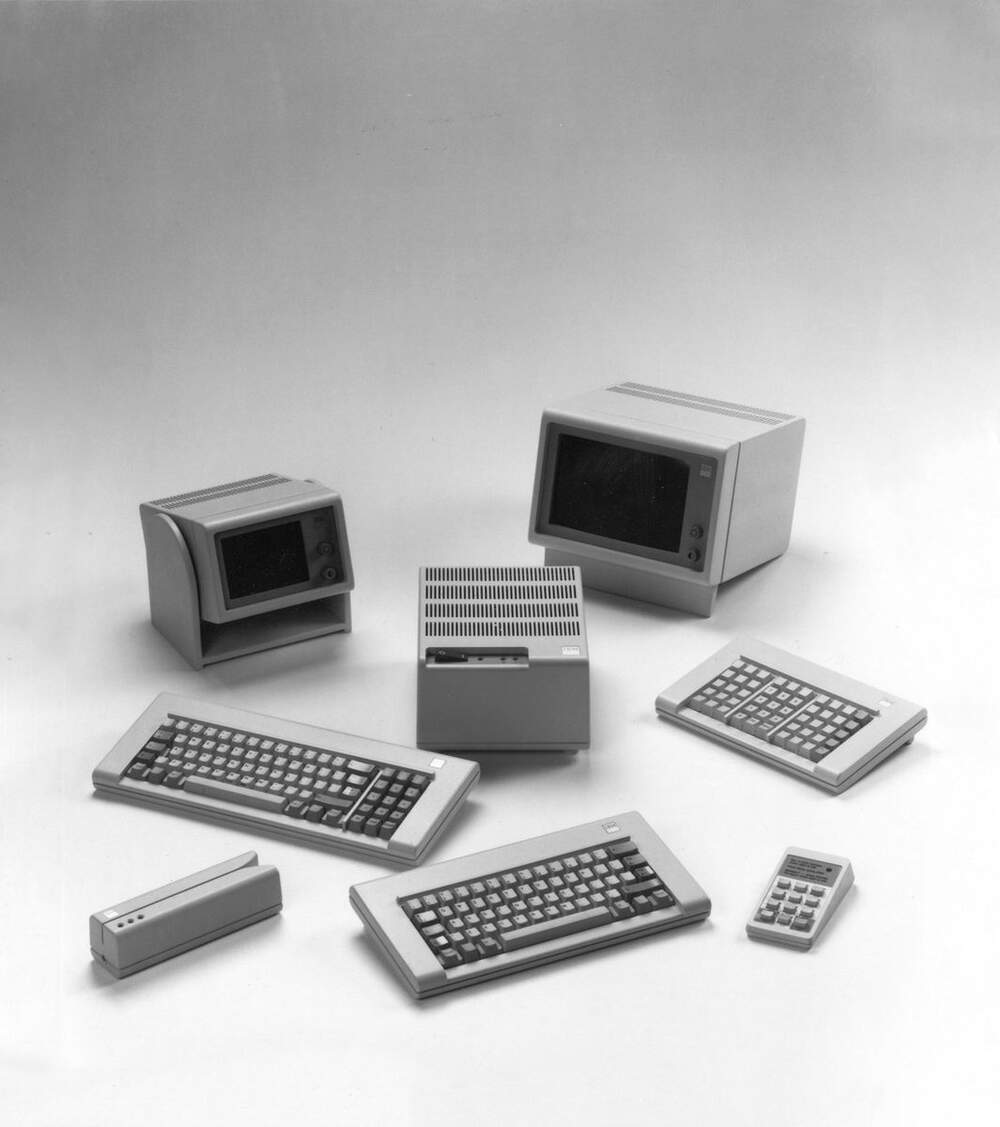
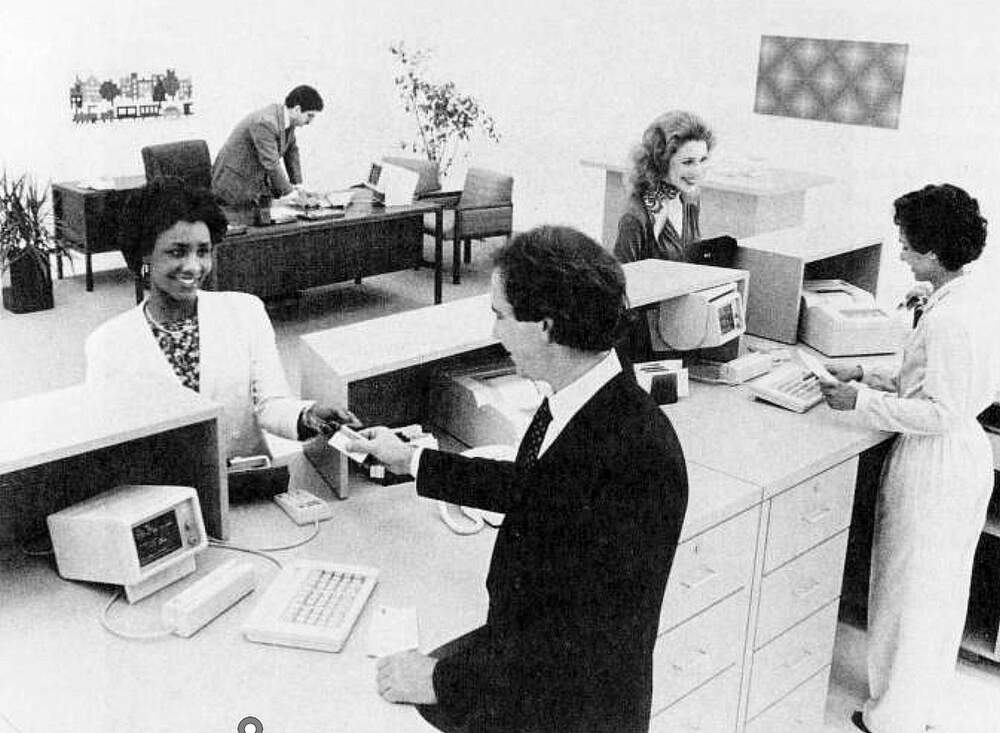
(IBM 3604, its predecessor, did something similar.)
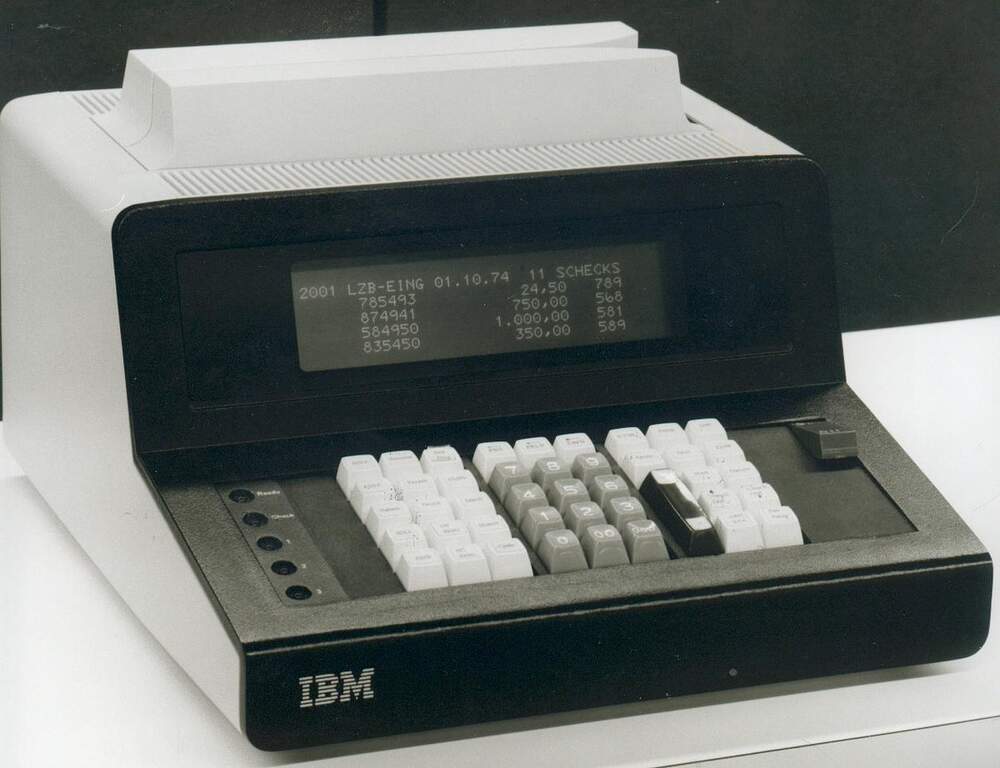
We’re getting smaller and smaller still.
Philips PX1000/Text Lite PX1200 were portable terminals with just one line of text, and of course it makes sense! They’re so thin and tiny.
Philips PX1000/Text Lite PX1200 were portable terminals with just one line of text, and of course it makes sense! They’re so thin and tiny.
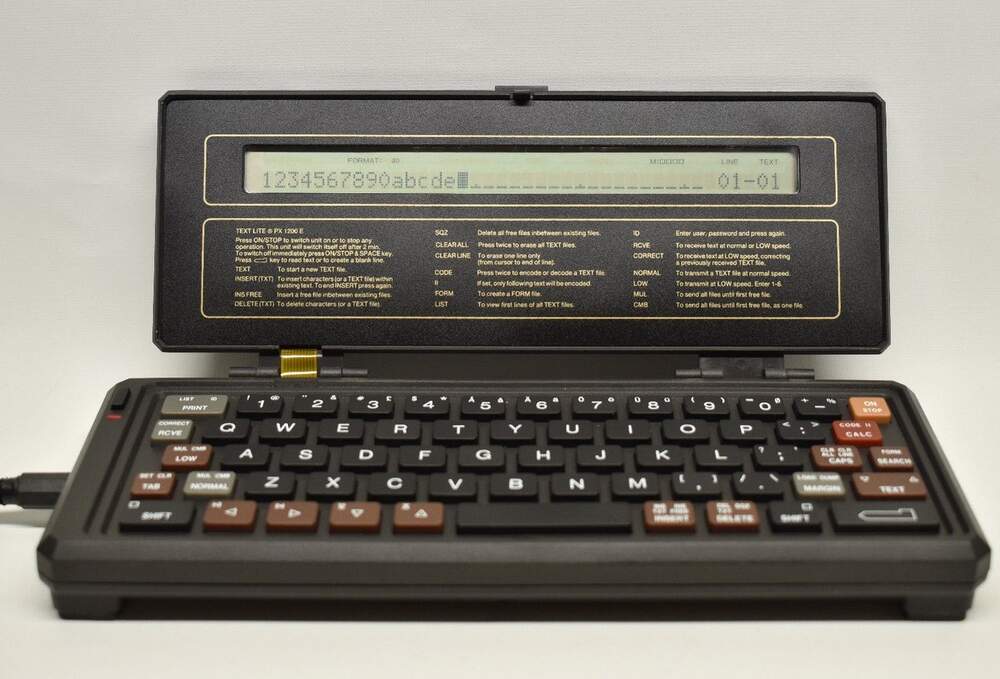
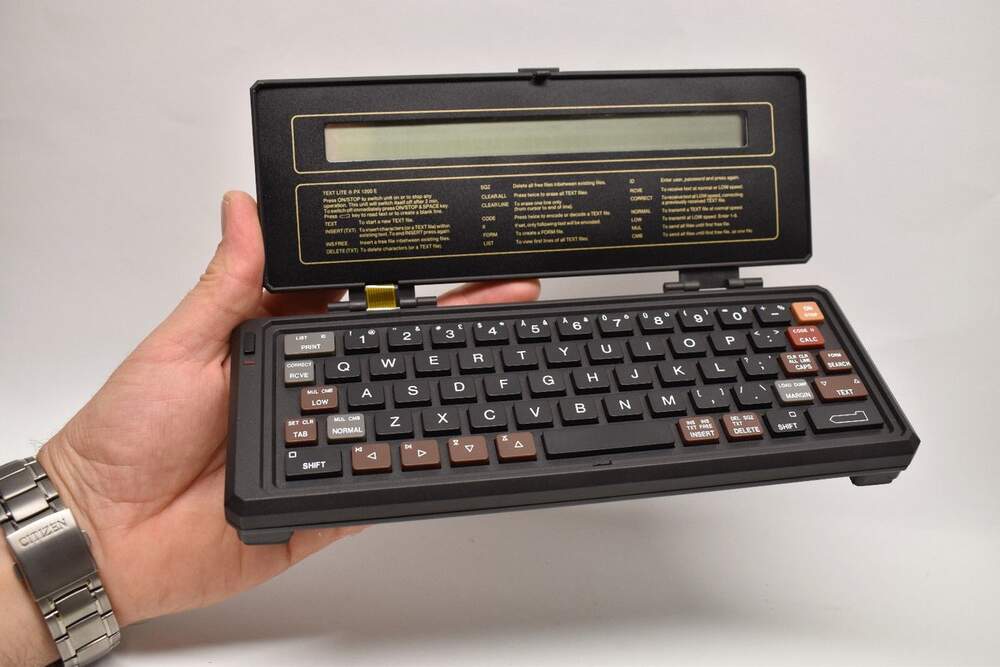
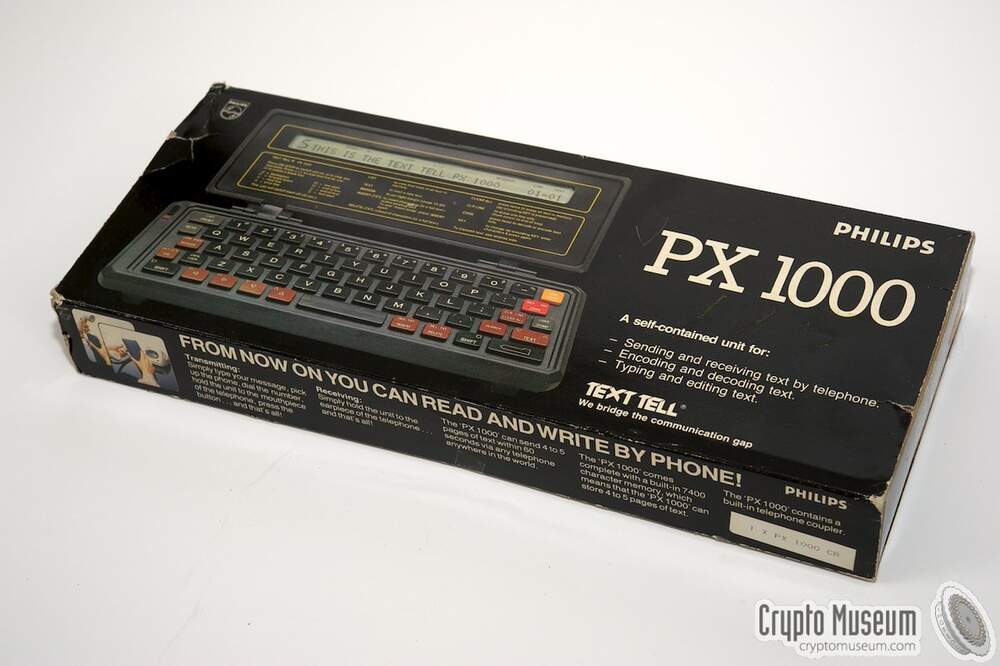
But if there’s one lesson we already learned in tech is that everything comes back: once-solved problems reappear as a headache for the next generation.
And so, a few decades earlier, you could buy a really expensive CompuWriter typesetting machine – but that big space in front was for paper you were typing *from*. The display was a tiny sliver of one line, off to the side.
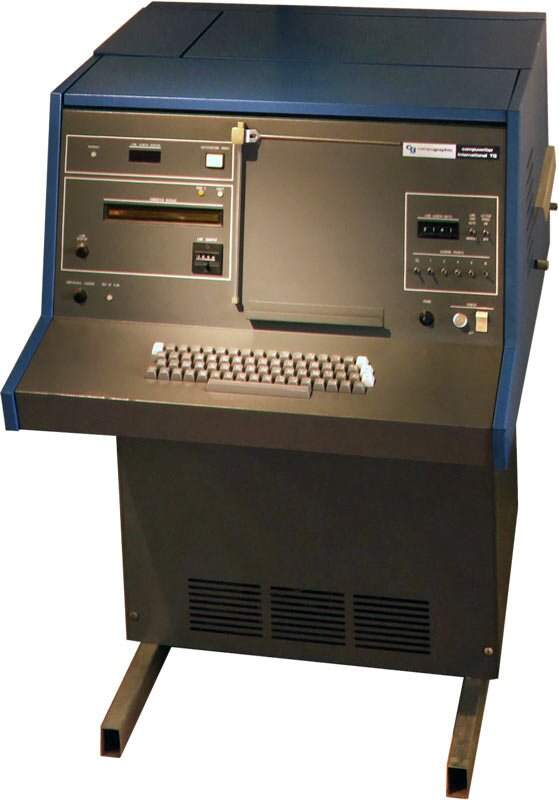
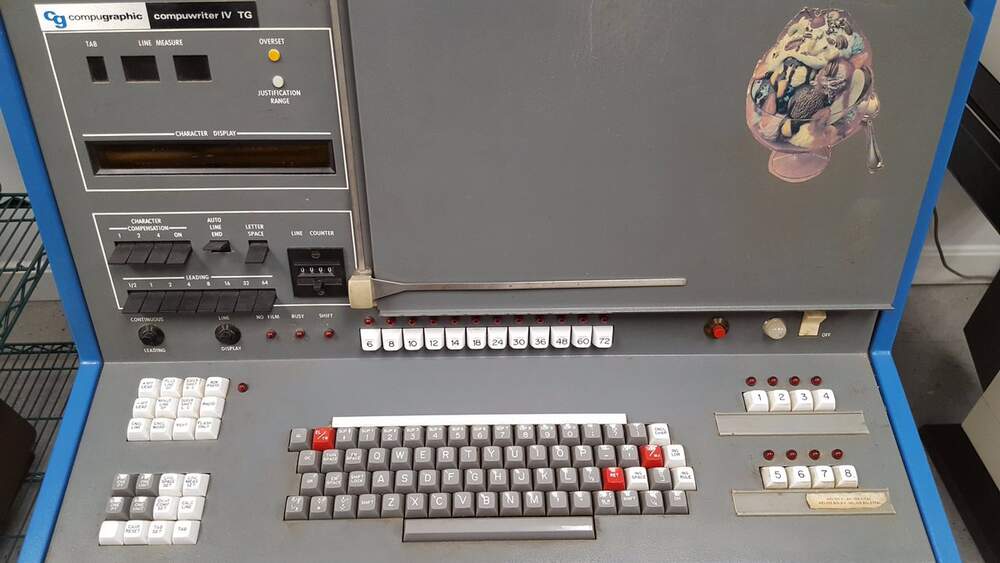
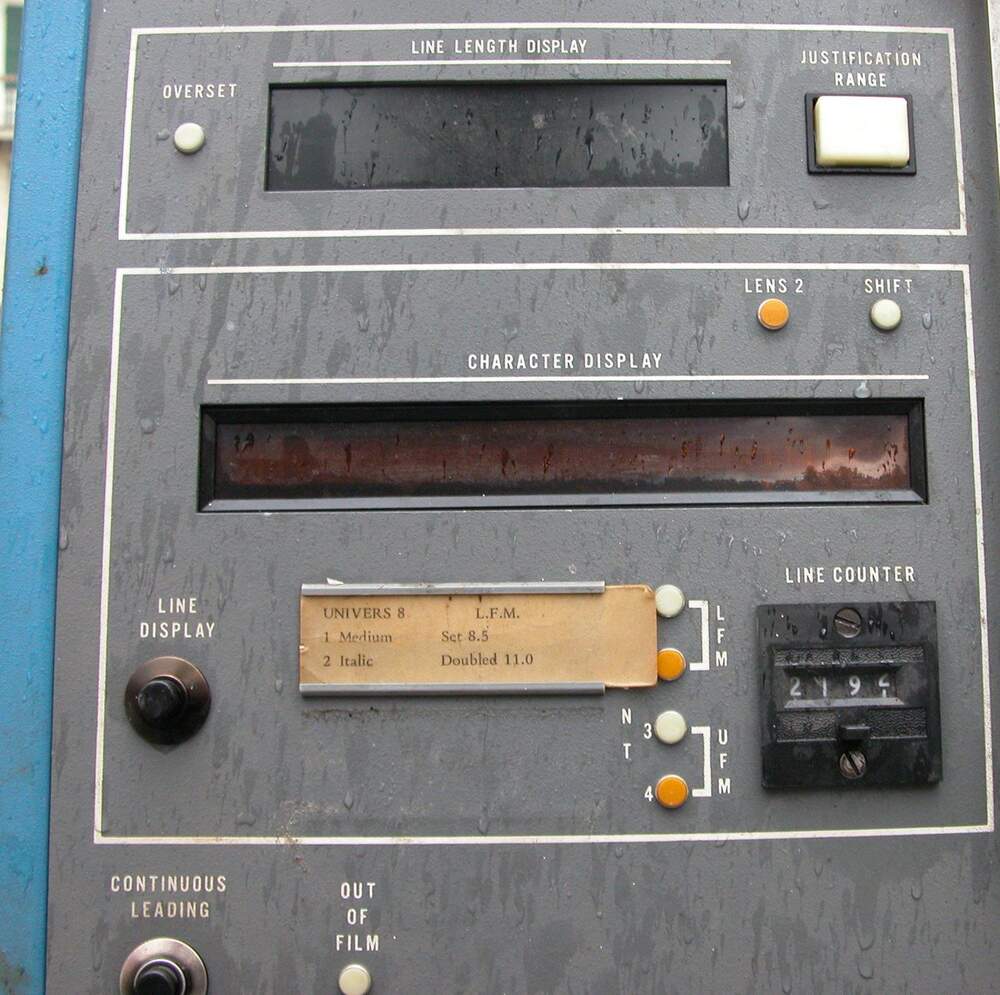
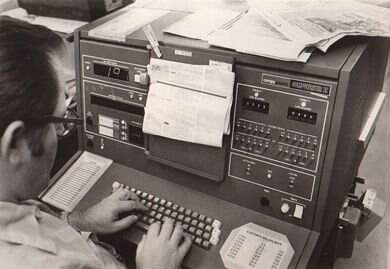
Or, remember that Xerox 850/860 machine from that we started with? If you couldn’t afford even the half-page screen, there was another option: a little display of 16 green letters.
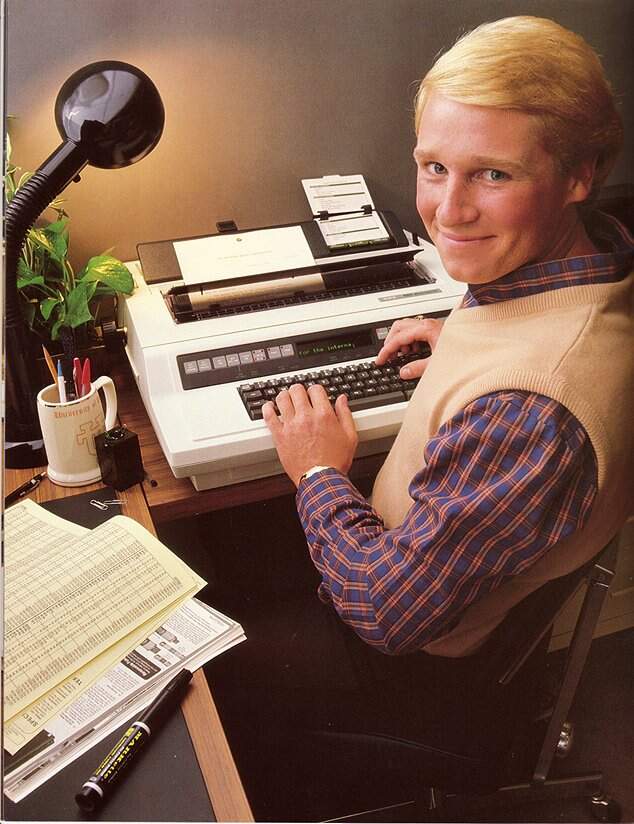
A Berthold typesetting machine came with a beautiful and unique keyboard – and in the periphery, a “screen” that felt more like a calculator display, with room for only *eight* last characters you typed.
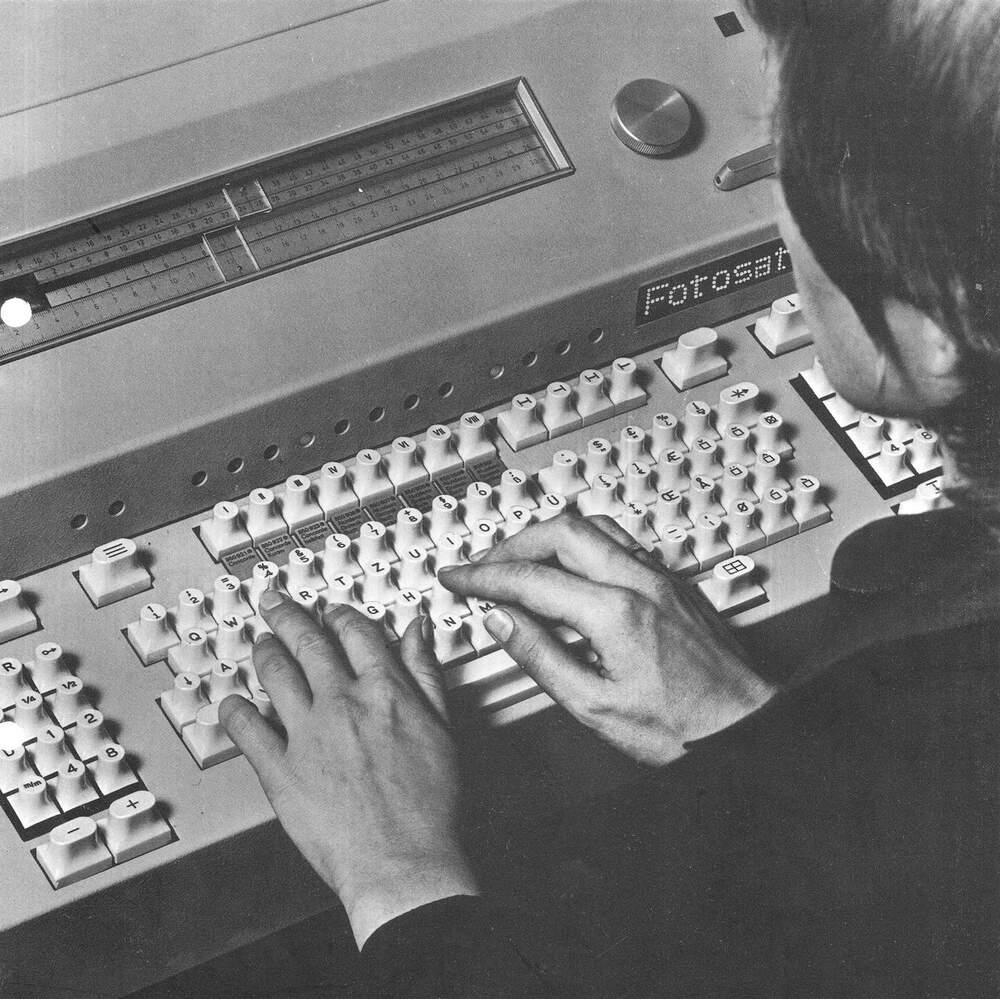
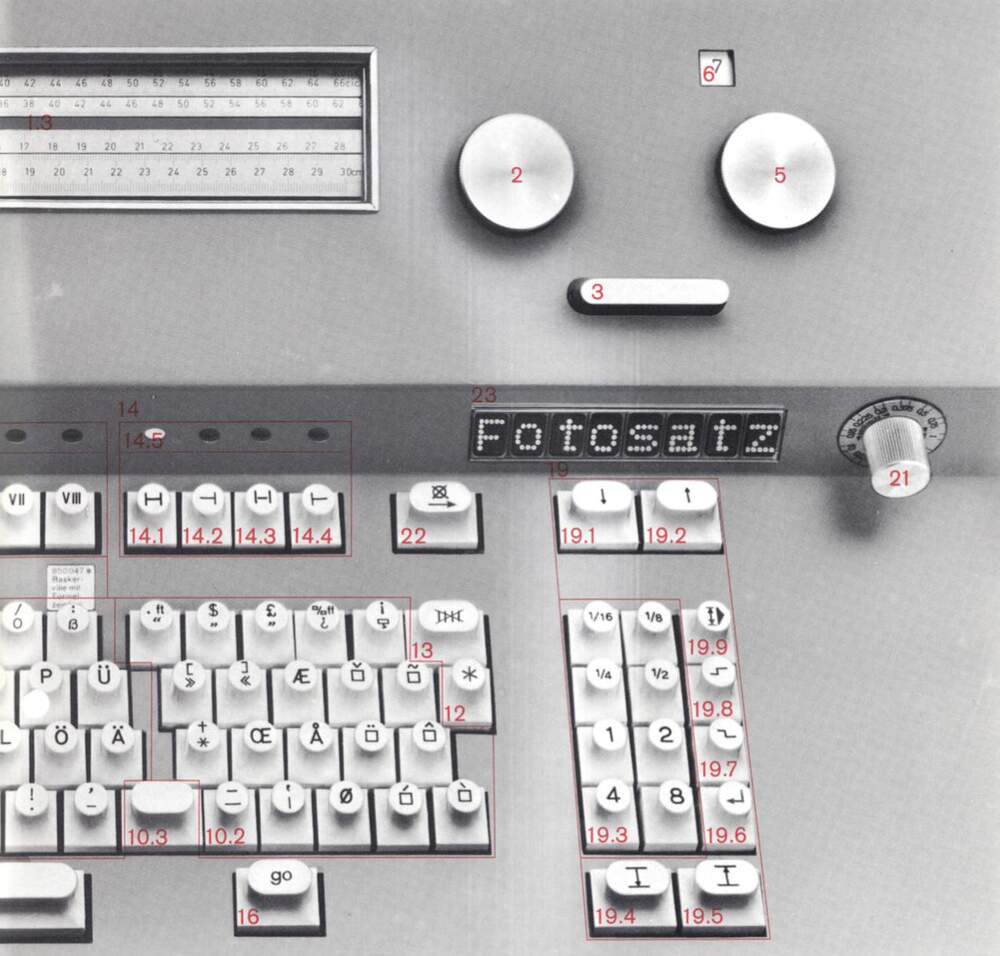
And if you’re thinking “at least the calculators are safe,” here is the abominable Royal Digital 3 with only *four* digits and a special key to scroll to the left or right.
(I wrote about Royal Digital 3 in my newsletter last year. It not only has the worst display, but also a pretty awful “keyboard”: The worst keyboard ever made)
But at last there *was* a display. Because we’re going to end one of the first computers ever, the otherwise glorious and memorable 1951’s UNIVAC, size of a room, its memory banks filled with mercury.
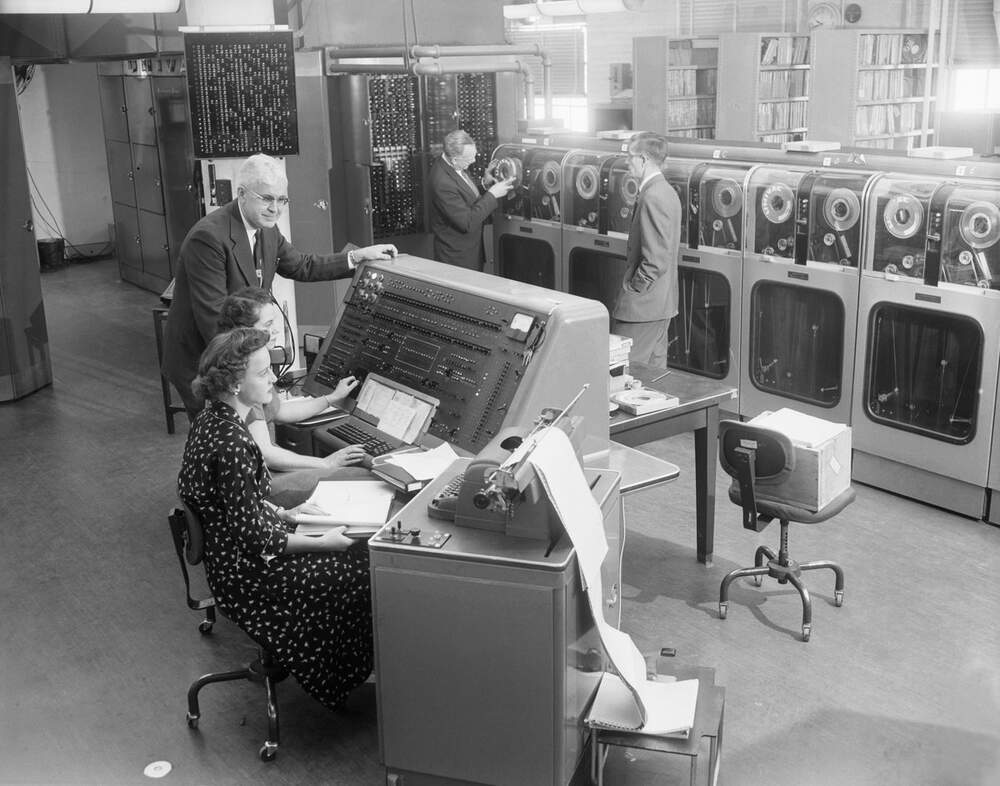
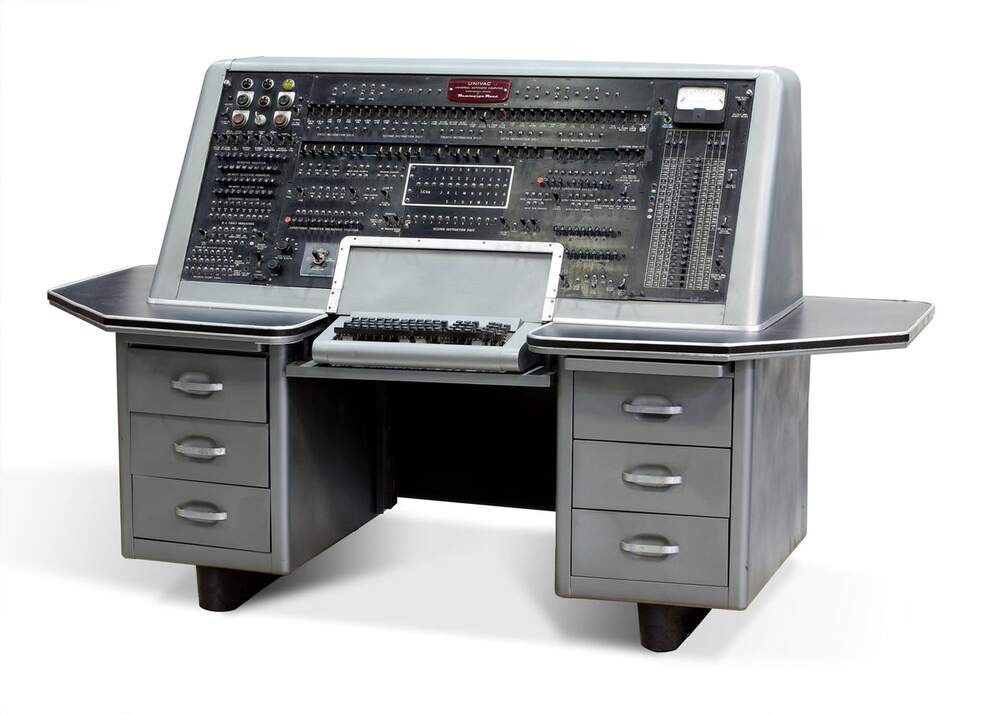
Where is its screen? *What* is its screen? Can you tell?
There it is, in the middle of its blinking console, surrounded by a white frame – a “display” of sorts, a screen of an era where cathode ray tubes in computers were used for… memory, rather than display. (Yes!)
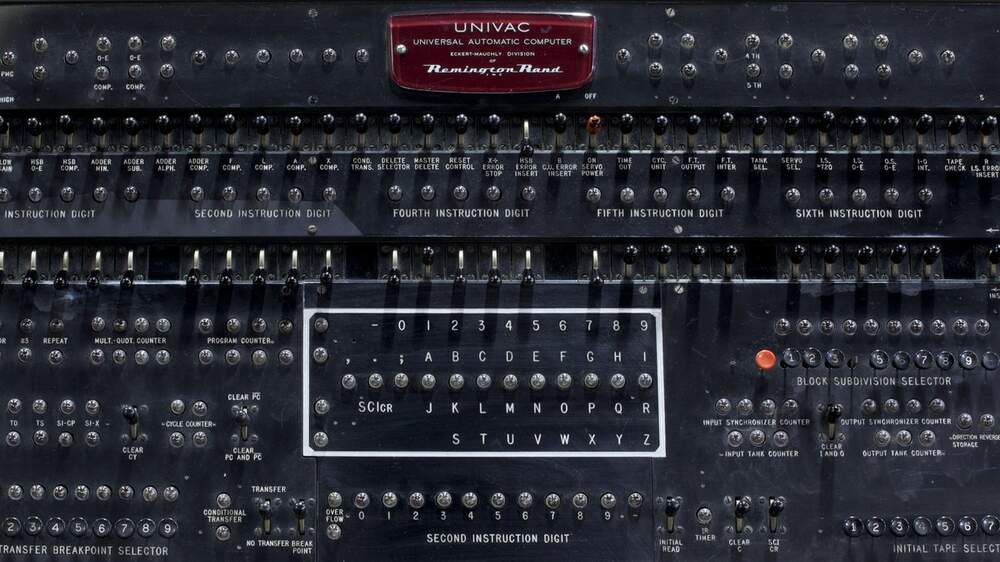
It’s pretty simple. Each character UNIVAC can share with you is accompanied by a simple lightbulb that would shine at the right moment.
If it seems simplistic and inadequate, it was, even in 1951.
Luckily at that time, and for a few decades later, people using computers who didn’t want to look at lightbulbs or spend a lot of $ for a flickering screen, had an alternative. At that time, and for a few decades later, the best computer display was still a nearby typewriter.
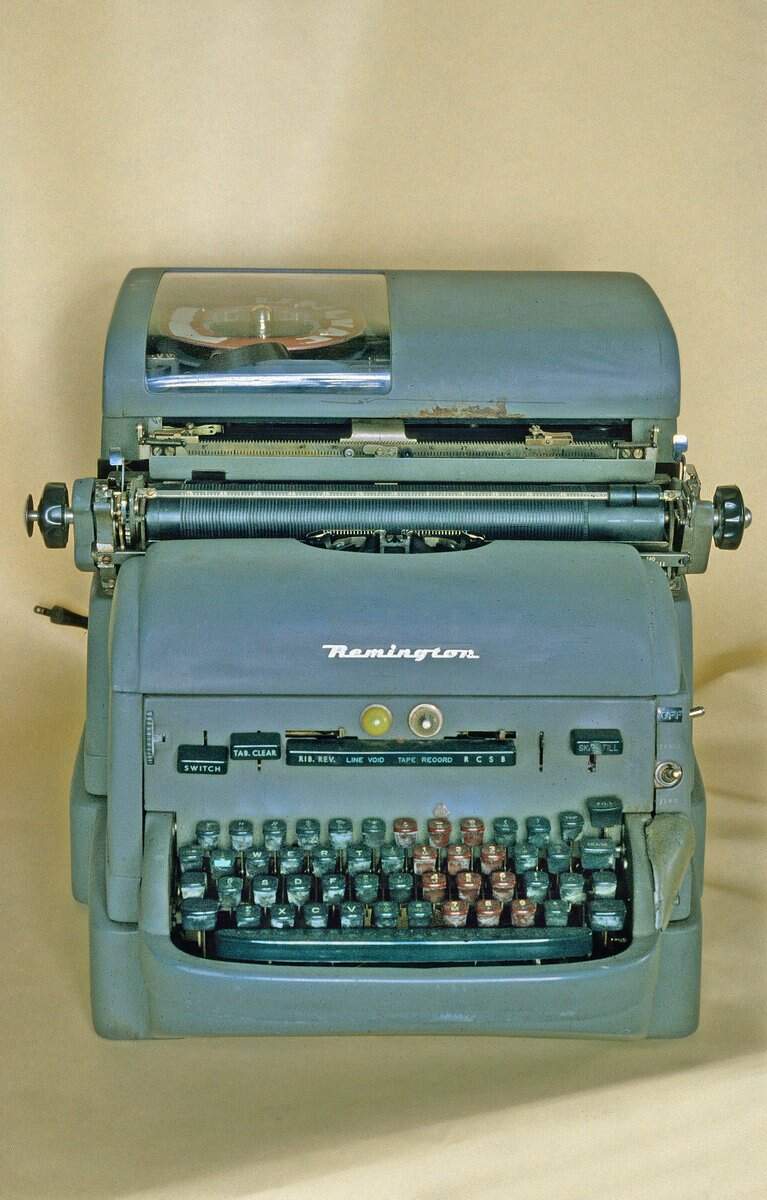
In conclusion, if you’re interested in the history of displays, BUY MY BOOK ABOUT KEYBOARDS.
But seriously, I found all of these in my research of keyboards, so I thought it’d be fun to share this parallel track!
But seriously, I found all of these in my research of keyboards, so I thought it’d be fun to share this parallel track!
(It’s actually a bit sad how much of this relatively recent history is already gone – how many of those specialized computers survive today only in bad scans of old newspaper photos.)
(And, if you’ve enjoyed it, you might enjoy the parallel thread called When Keyboards Were Desks: When keyboards were desks)